
Tijuana has long been associated with quick jaunts by Americans seeking a taste of Mexican culture, but it has also been the target of cultural bashing. The city recently lived up to one border-city stereotype: a disturbingly high homicide rate that crowned it as the murder capital of the world.
This city of 1.9 million people 20 miles south of downtown San Diego had 2,640 murders in 2018, equal to a rate of 138 per 100,000 residents in 2018, the most of any city worldwide. Tijuana wrested the title away from 2017’s murder capital, another Mexican tourist city, Los Cabos.
24/7 Wall St. reviewed the world’s 50 most dangerous cities — the ones with the highest murder rates — as reported by El Consejo Ciudadano para la Seguridad Pública y la Justicia Penal (The Citizen Council for Public Security and Criminal Justice), a Mexico City-based advocacy group. The group considers cities outside of war zones with populations greater than 300,000 that provide relatively reliable murder statistics for its report. The group began tracking murder statistics and publish annual reports with 2013 data. Murder tends to be indicative of overall violent crime levels.
Across the board, the main culprits of the high murder rates were street-level gangs and splinter groups of major drug cartels engaged in urban turf battles, kidnappings, armed robberies, and revenge killings. In some of the countries on this list and their neighbors, problems of violence are so severe that the U.S. State Department has issued advisories urging Americans to consider avoiding traveling there. Here is a list of 14 countries the U.S. government doesn’t want you to visit.
It’s important to know that high homicide rates do not mean foreign visitors are at imminent risk when they travel to these cities. Locals are by far the most likely targets of violence. For example, St. Louis had a higher murder rate in 2018 than nine of the Mexican cities on this list, but visitors to Missouri’s largest city aren’t typically exposed to the violence. St. Louis isn’t the only American City to make this list of the most dangerous cities in the world — in fact, three of the most violent American cities are on this list. These are the 25 most dangerous cities in America.
Click here to see the most dangerous cities in the world
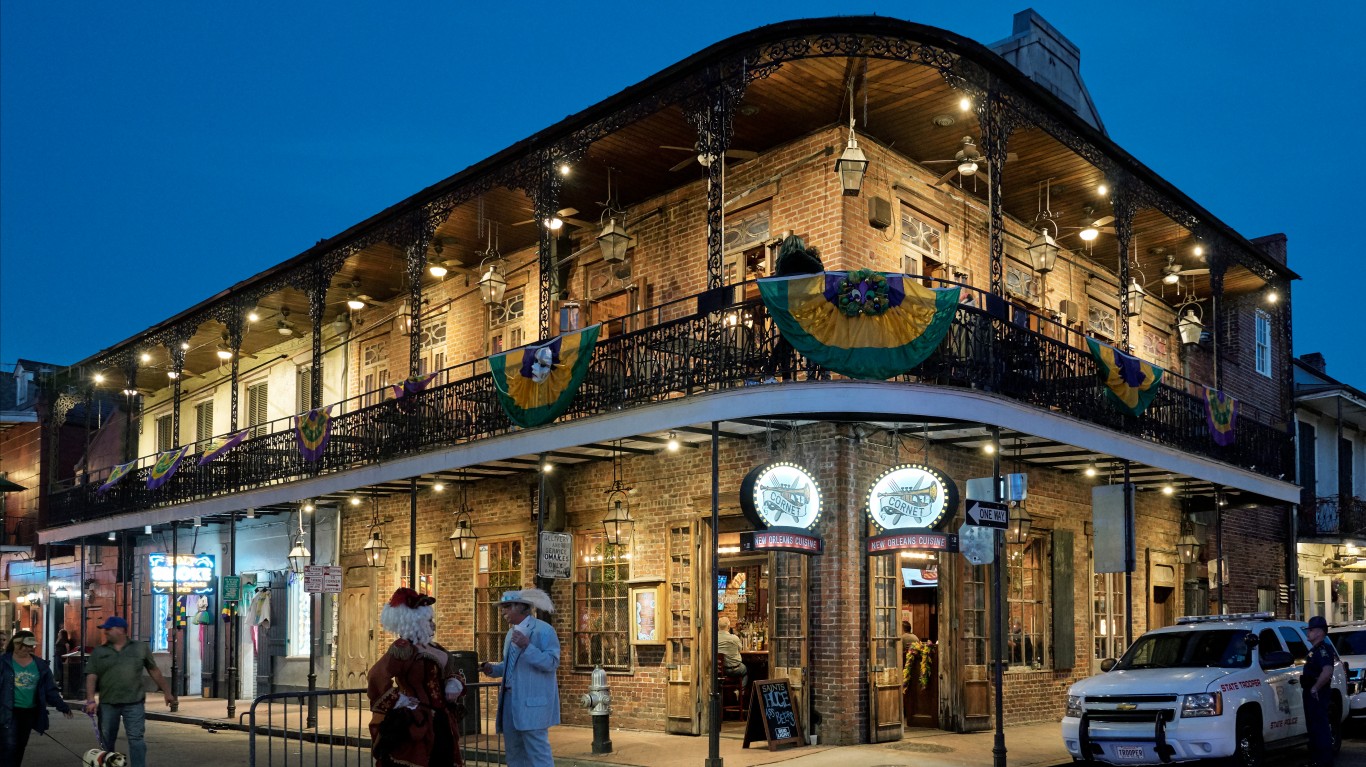
50. New Orleans, USA
> Homicides per 100,000 in 2018: 37
> Homicides in 2018: 145
> Population: 393,292
The Big Easy’s homicide rate has declined in 2018, the second consecutive year of decline and nearly knocking the city off the list of the world’s 50 most dangerous for the first time since records for this annual report started in 2013. That year, New Orleans was the country’s second most dangerous city after Detroit. The city is now the fifth most dangerous in the United States, a list that includes San Juan, the capital of Puerto Rico.
[in-text-ad]
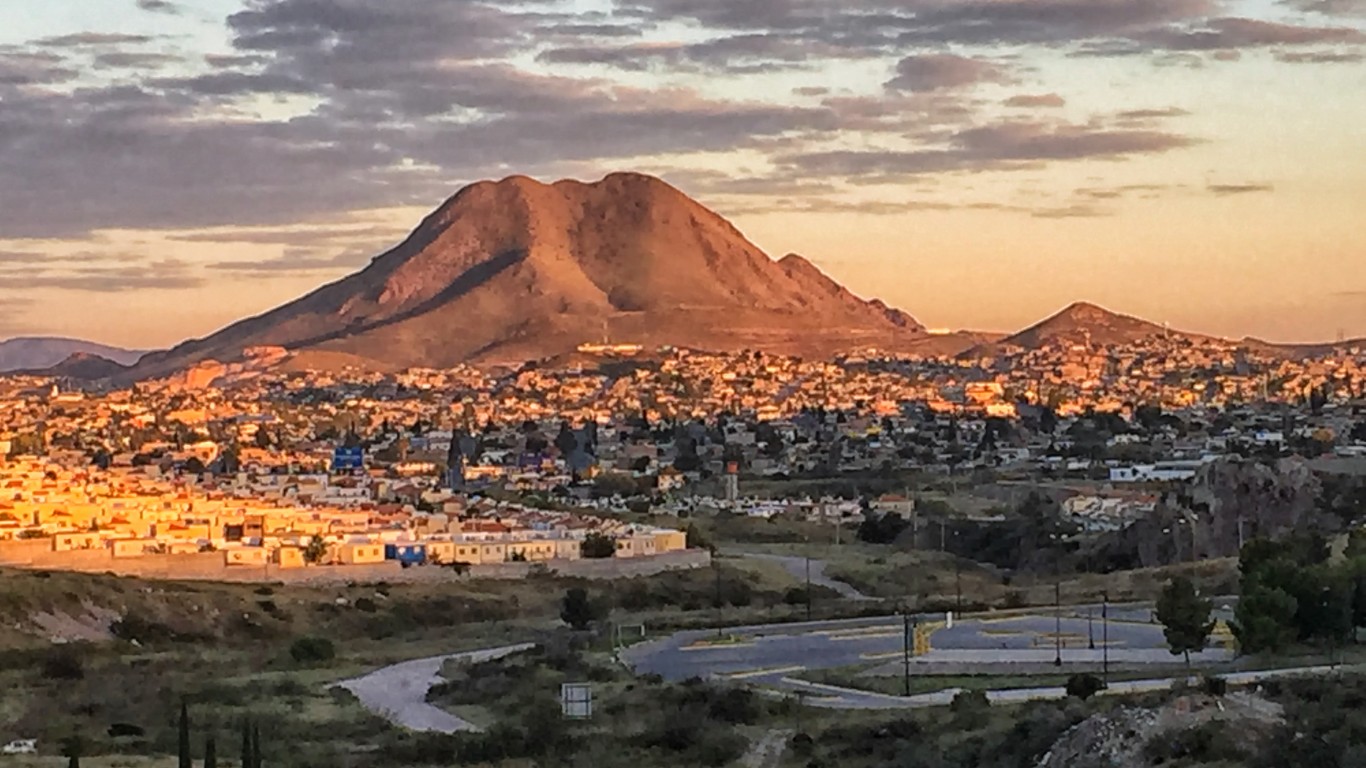
49. Chihuahua, Mexico
> Homicides per 100,000 in 2018: 38
> Homicides in 2018: 352
> Population: 938,713
The capital of the northern Mexican state, situated about 150 miles from the Mexico-U.S. border, barely eked into the list of the world’s most dangerous cities for 2018. The city’s homicide rate fell in 2018 from 49.5 per 100,000 residents in 2017, mostly the result of gang violence. The 2018 rate is also measurably lower than in was in 2013 â the first year the annual ranking was published. That year Chihuahua’s homicide rate topped 50 per 100,000, and the city was Mexico’s fourth most dangerous city.
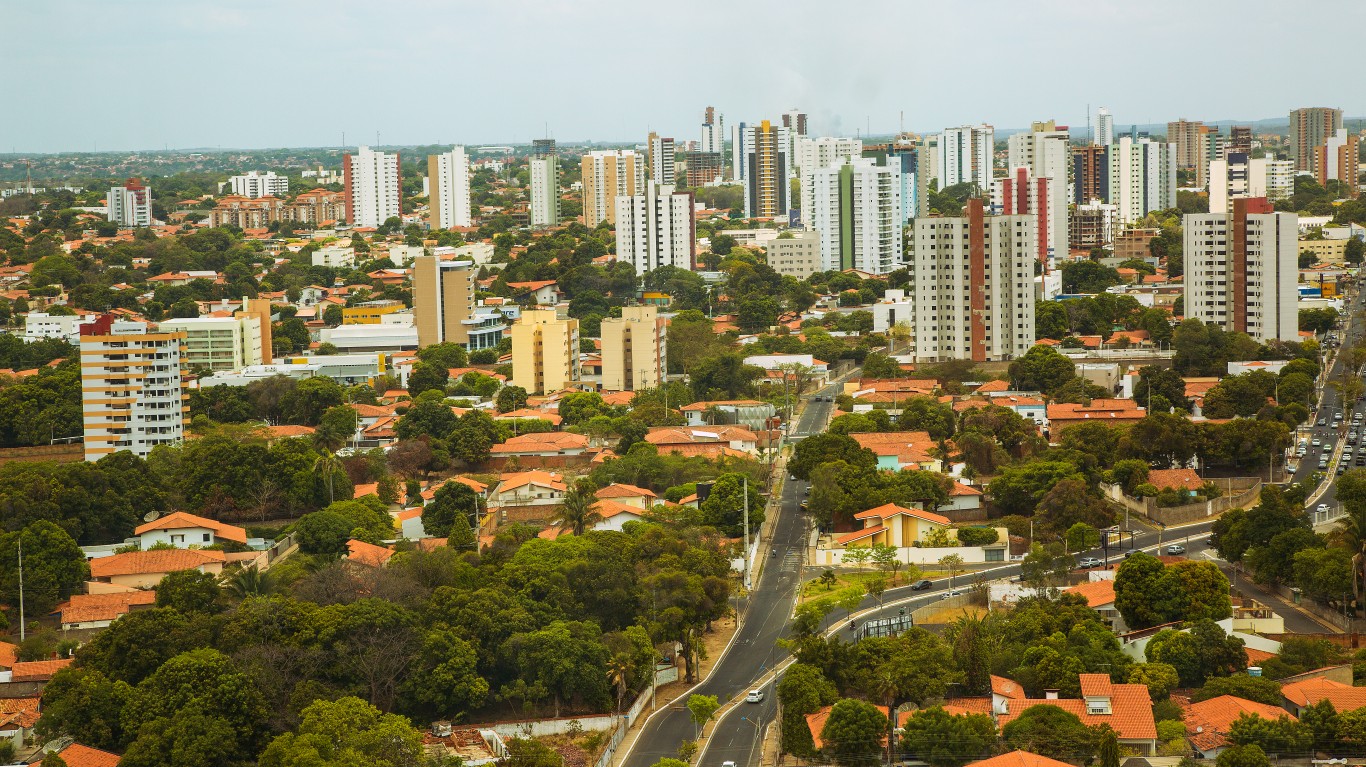
48. Teresina, Brazil
> Homicides per 100,000 in 2018: 38
> Homicides in 2018: 324
> Population: 861,442
After three consecutive years of decline, the murder rate in this industrial city in Brazil’s northeastern region, one of the country’s poorest, ticked up slightly from 37 murders per 100,000 residents in 2017. The capital city of Piauí, a Brazilian state known for its scenic national parks, first appeared on this annual list in 2014 as Brazil’s 20th most dangerous city at the time.
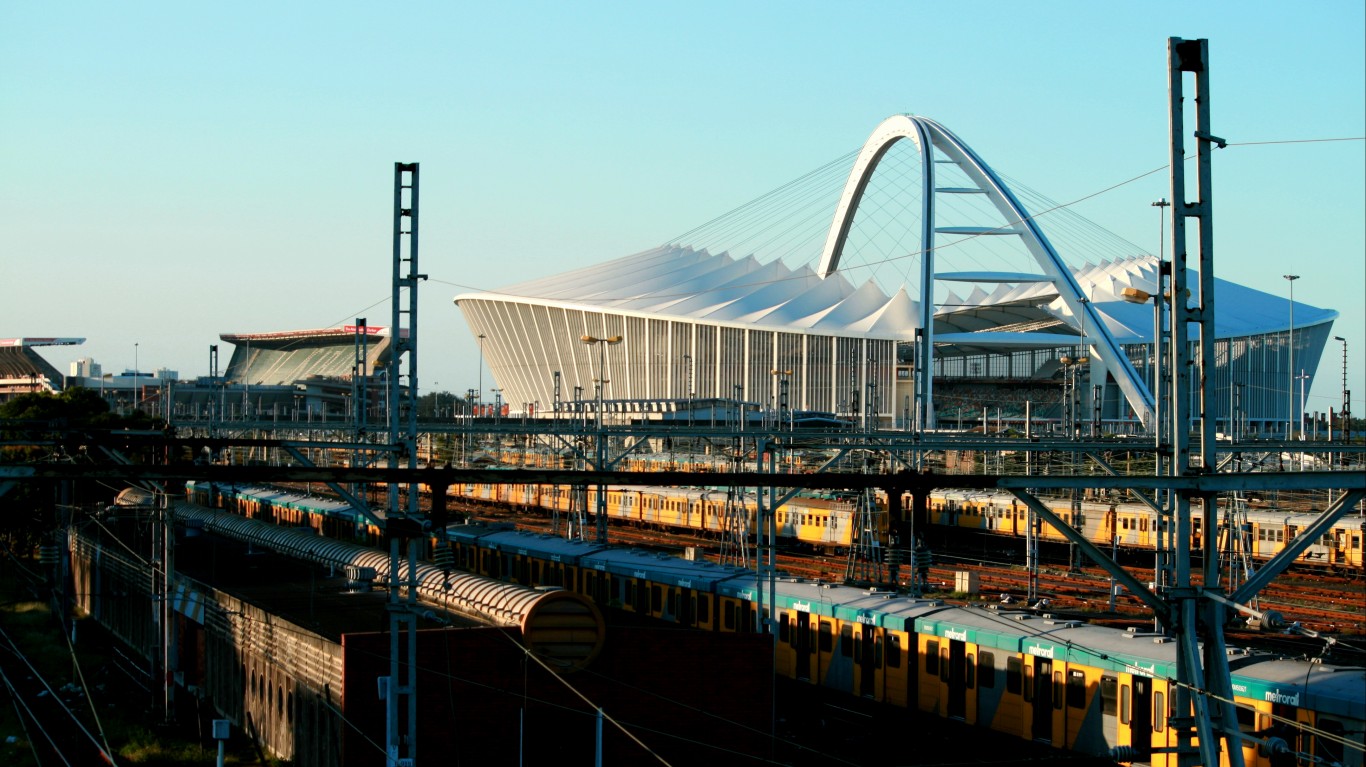
47. Durban, South Africa
> Homicides per 100,000 in 2018: 39
> Homicides in 2018: 1,562
> Population: 4,055,969
This eastern coastal South African city has a similar homicide rate to Nelson Mandela Bay about 560 miles down the coast. The homicide rate in Durban in 2018 ticked up, but the city’s ranking rose to 47 from 44 in 2017, and it traded places with Nelson Mandela Bay to become the country’s third most dangerous, as it was in 2013, 2014, and 2016.
[in-text-ad-2]
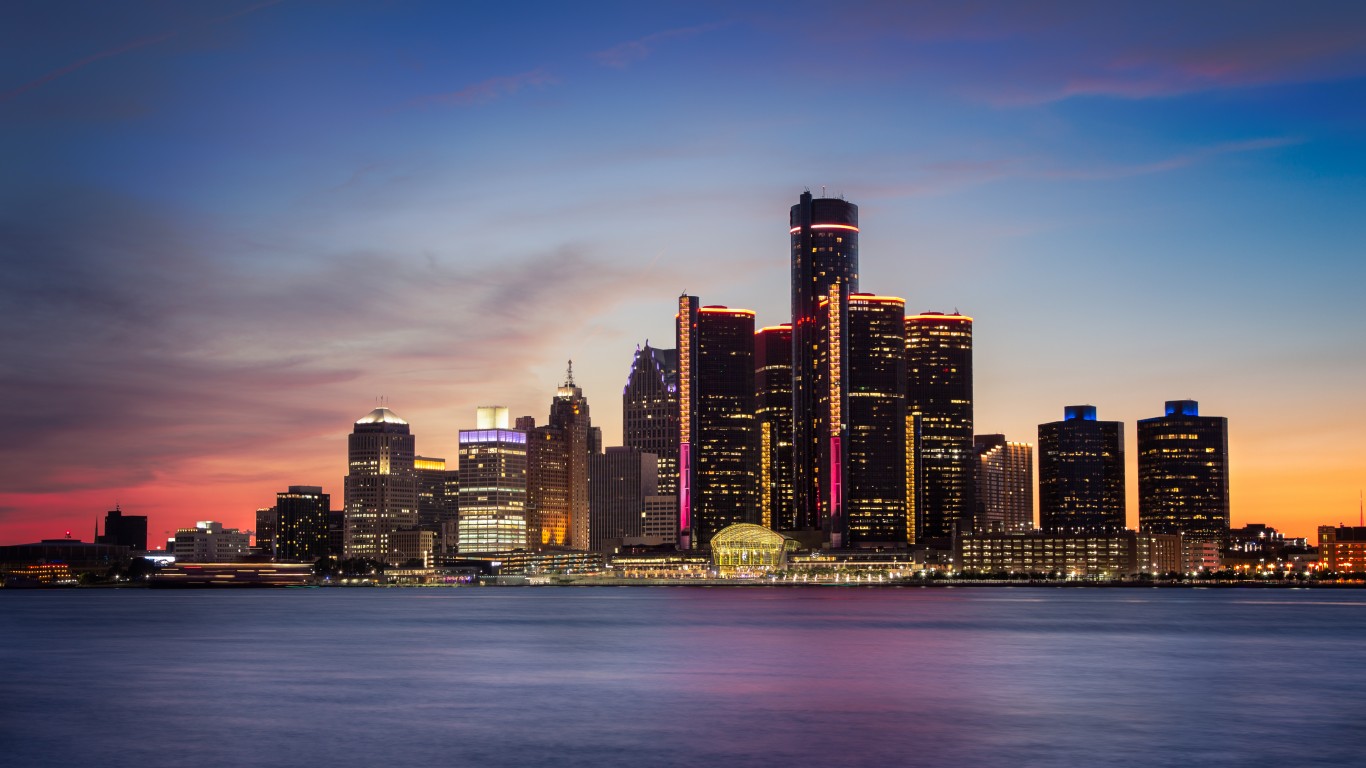
46. Detroit, USA
> Homicides per 100,000 in 2018: 39
> Homicides in 2018: 261
> Population: 673,104
Detroit routinely ranks among the four most dangerous U.S. cities, along with New Orleans, Baltimore, and St. Louis. (San Juan, the capital of the U.S. commonwealth of Puerto Rico, joined this list in 2017.) The city’s homicide rate was almost unchanged in 2018, at 39 per 100,000 residents, compared to the year before, but because of improvements in New Orleans, Detroit’s U.S. ranking fell to fourth from fifth place in 2017.
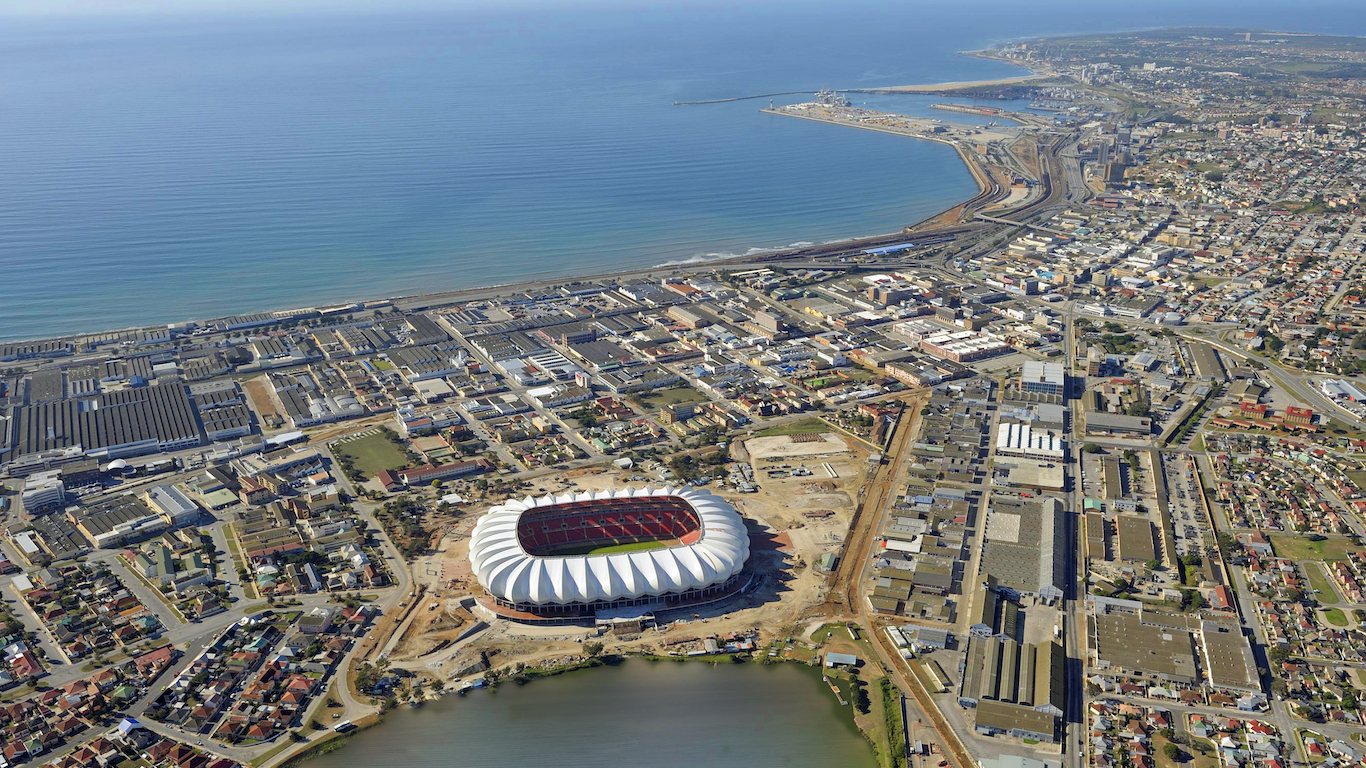
45. Nelson Mandela Bay, South Africa
> Homicides per 100,000 in 2018: 39
> Homicides in 2018: 478
> Population: 1,220,616
The murder rate in Nelson Mandela Bay, which comprises the city of Port Elizabeth and surrounding area, increased slightly in 2018, pushing its rank to the world’s 46th highest homicide rate and becoming South Africa’s second most dangerous city. Nelson Mandela Bay and Durban, about 570 miles up the coast, typically trade positions as the country’s second or third most dangerous cities each year. The two have had closely comparable murder rates that have fluctuated between 32 and 39 per 100,000 every year since tracking first began in 2013.
[in-text-ad]
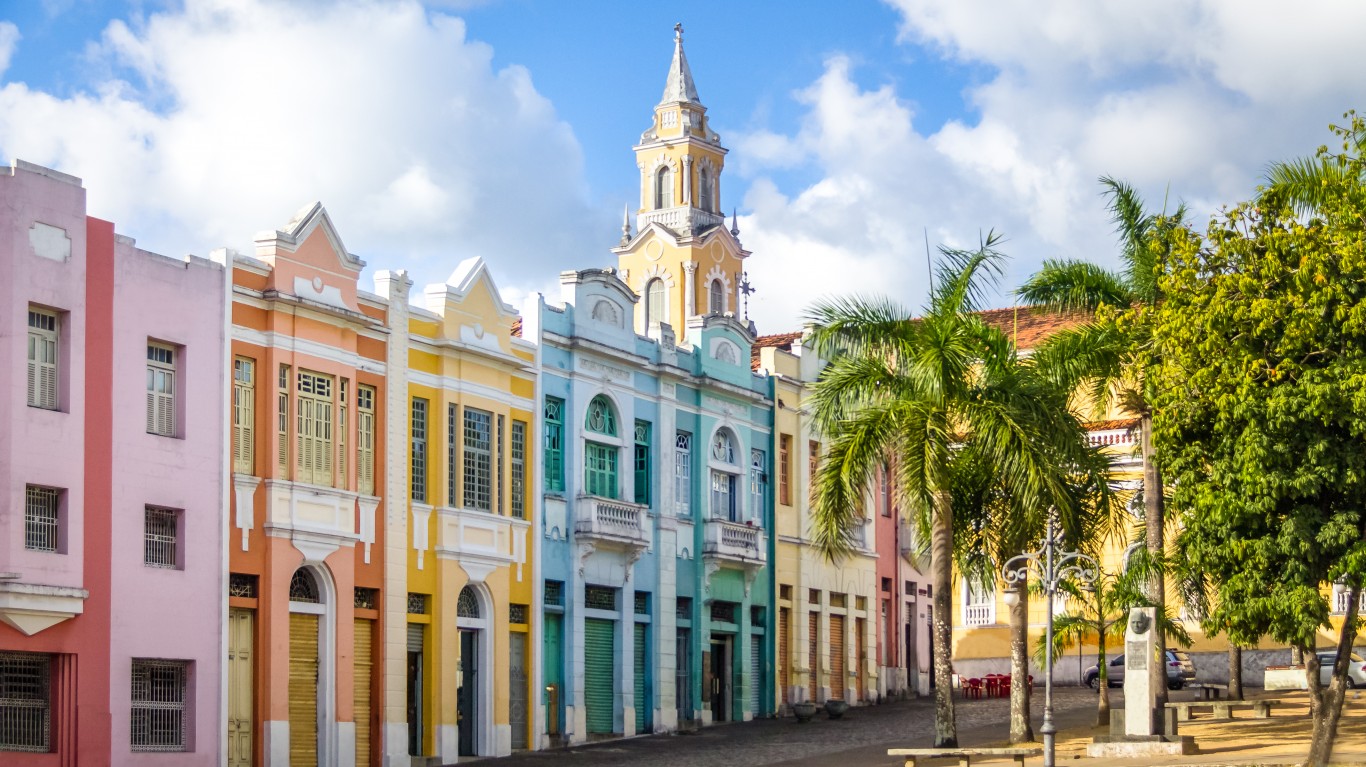
44. João Pessoa, Brazil
> Homicides per 100,000 in 2018: 41
> Homicides in 2018: 460
> Population: 1,112,304
Homicides in the easternmost city in the western hemisphere declined from 49.2 per 100,000 residents in 2017 and 47.6 per 100,000 residents in 2018. The murder rate has been cut by nearly half since 2014, when the rate topped 79 per 100,000. That year, the city in the northeastern Paraíba state was the fourth most dangerous city in the world. Tourism is important to the local economy, which might explain the successful efforts to curb violence there.

43. Guatemala City, Guatemala
> Homicides per 100,000 in 2018: 44
> Homicides in 2018: 1,411
> Population: 3,226,974
Like the two other Central American countries of the Northern Triangle, residents of Guatemala’s capital city are experiencing lower rates of homicide compared to 2017 when the rate hit a four-year high of 53.5 per 100,000 residents. The city’s rank on this list dropped significantly since 2013, when it ranked as eighth most dangerous with a murder rate that topped 68 per 100,000 residents.

42. Reynosa, Mexico
> Homicides per 100,000 in 2018: 41
> Homicides in 2018: 295
> Population: 711,130
This northern Mexican border city first appeared on this annual ranking on 2017, debuting as the world’s 38th and the country’s 11th most dangerous city. Reynosa is one of the bigger cities in the country’s northeastern Tamaulipas state, where Mexican anti-cartel operations successfully dismantled the Gulf and Zetas cartel. Unfortunately, this led to turf wars between emerging splinter groups that ravaged the state.
[in-text-ad-2]
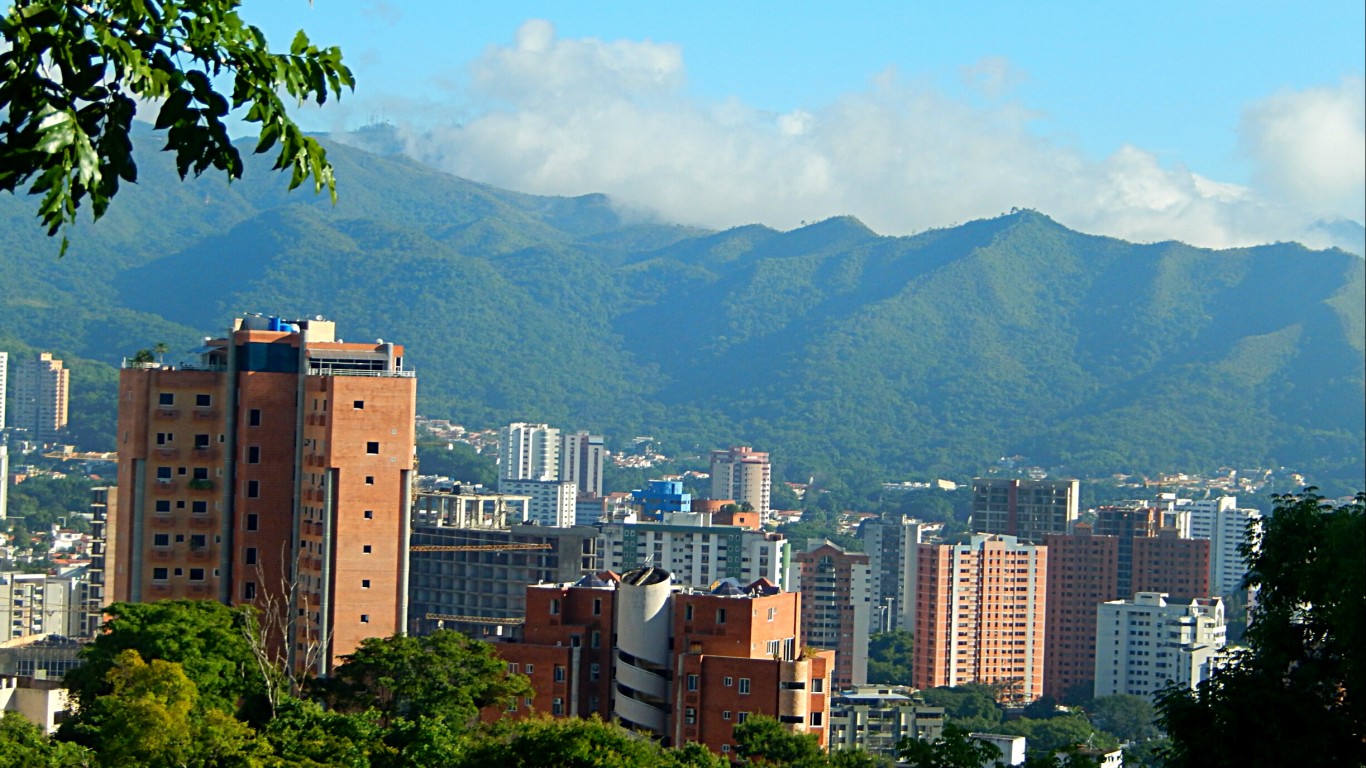
41. Valencia, Venezuela
> Homicides per 100,000 in 2018: 42
> Homicides in 2018: 678
> Population: 1,600,662
In 2013, Venezuela’s third largest city, located about 100 miles west of Caracas, barely made the first of this annual list of the world’s 50 most dangerous cities, coming in at number 50. But as the political and economic situations worsened in Venezuela, murders more than doubled in 2014, pushing Valencia to the world’s seventh and the country’s second most dangerous city. Murders declined in 2017 and fell further in 2018, and now the city ranks as the country’s sixth most dangerous.
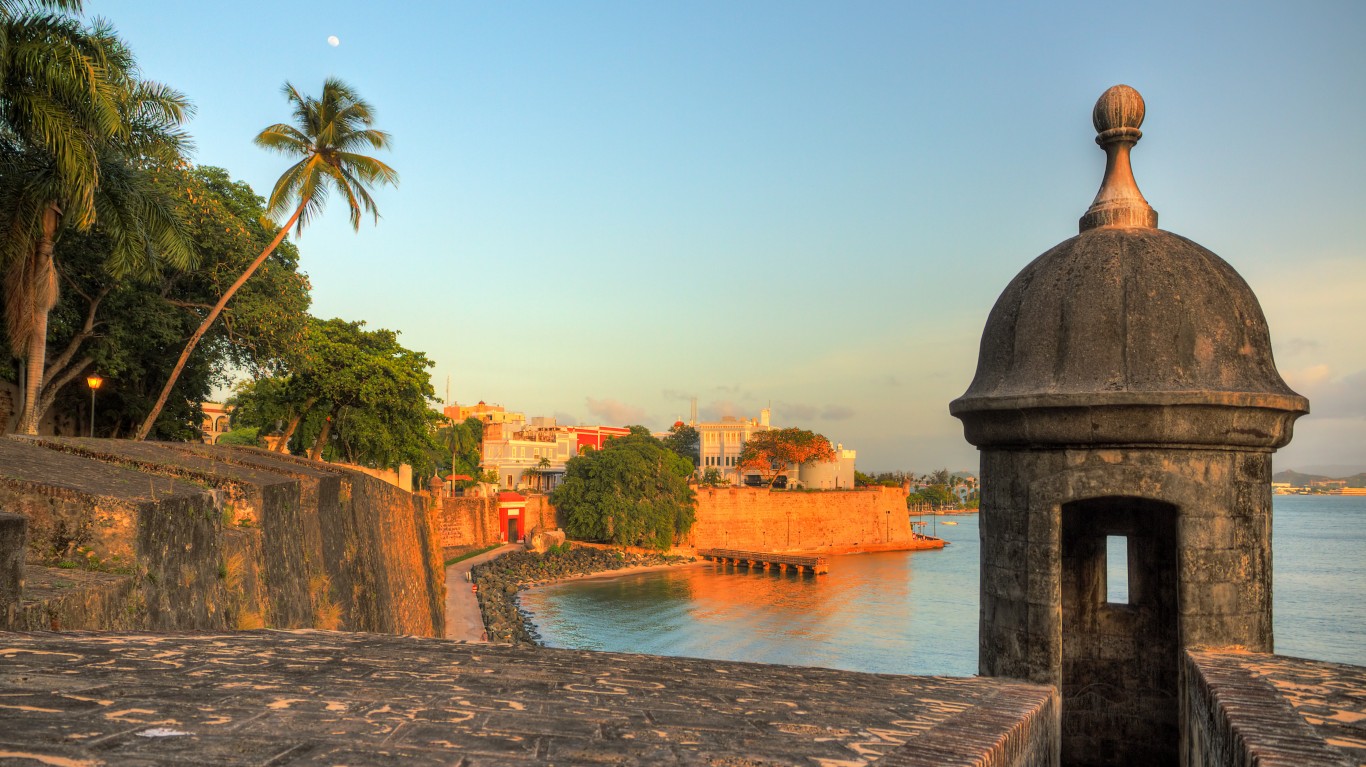
40. San Juan, USA
> Homicides per 100,000 in 2018: 42
> Homicides in 2018: 143
> Population: 337,288
Struggling with an economic crisis in the wake of Hurricane Maria in 2017 that ravaged the U.S. commonwealth of Puerto Rico, San Juan joined the list of the 50 most dangerous cities in the world in 2017. (There was a spike in murders in the island after the storm struck.) The homicide rate declined modestly in 2018, from 48.7 per 100,000 residents in 2017, but San Juan continues to be the U.S. city with the third highest homicide rate.
[in-text-ad]

39. Distrito Central, Honduras
> Homicides per 100,000 in 2018: 43
> Homicides in 2018: 538
> Population: 1,242,397
The homicide rate in the Distrito Central of Honduras, which includes the capital Tegucigalpa and its sister city Comayagüela, has dropped significantly in 2018 from a recent peak of slightly over 85 murders per 100,000 residents in 2016. Honduras has been the most violent-wreaked of the three Northern Triangle countries of Central America, which include neighboring Guatemala and El Salvador. Virulent urban gang violence has spurred an exodus of migrants in the region hoping to seek refuge in the United States.
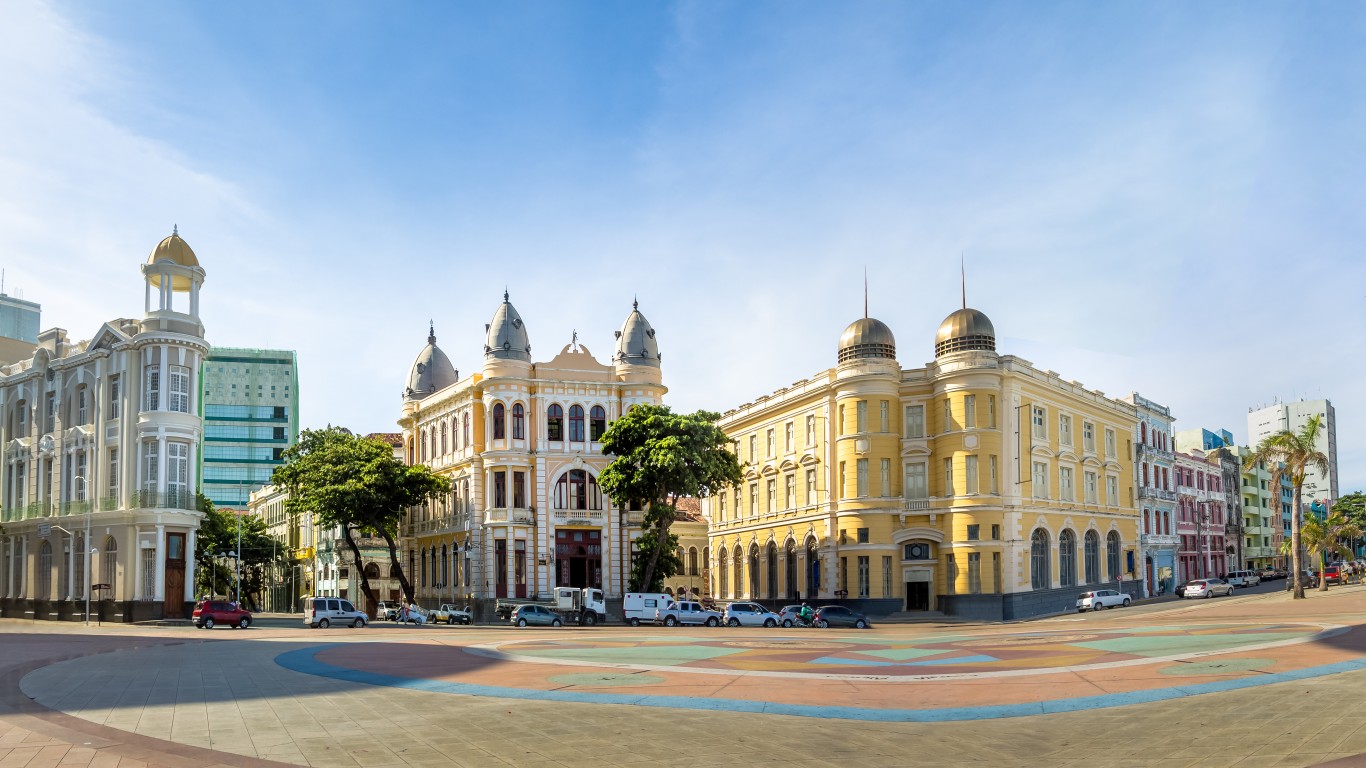
38. Recife, Brazil
> Homicides per 100,000 in 2018: 44
> Homicides in 2018: 1,738
> Population: 3,975,411
Known for its dynamic cultural and entertainment scene, scenic historic center, and burgeoning regional technology hub, this capital city of Brazil’s eastern Pernambuco state reeled in its homicide rate in 2018 from 55 per 100,000 residents in 2017, dropping in the rank from No. 22 to 38. The murder rate fell last year to a three-year low, but it’s still the country’s eighth most dangerous city. Recife is 75 miles down the coast from João Pessoa, which ranks 44th on this list.
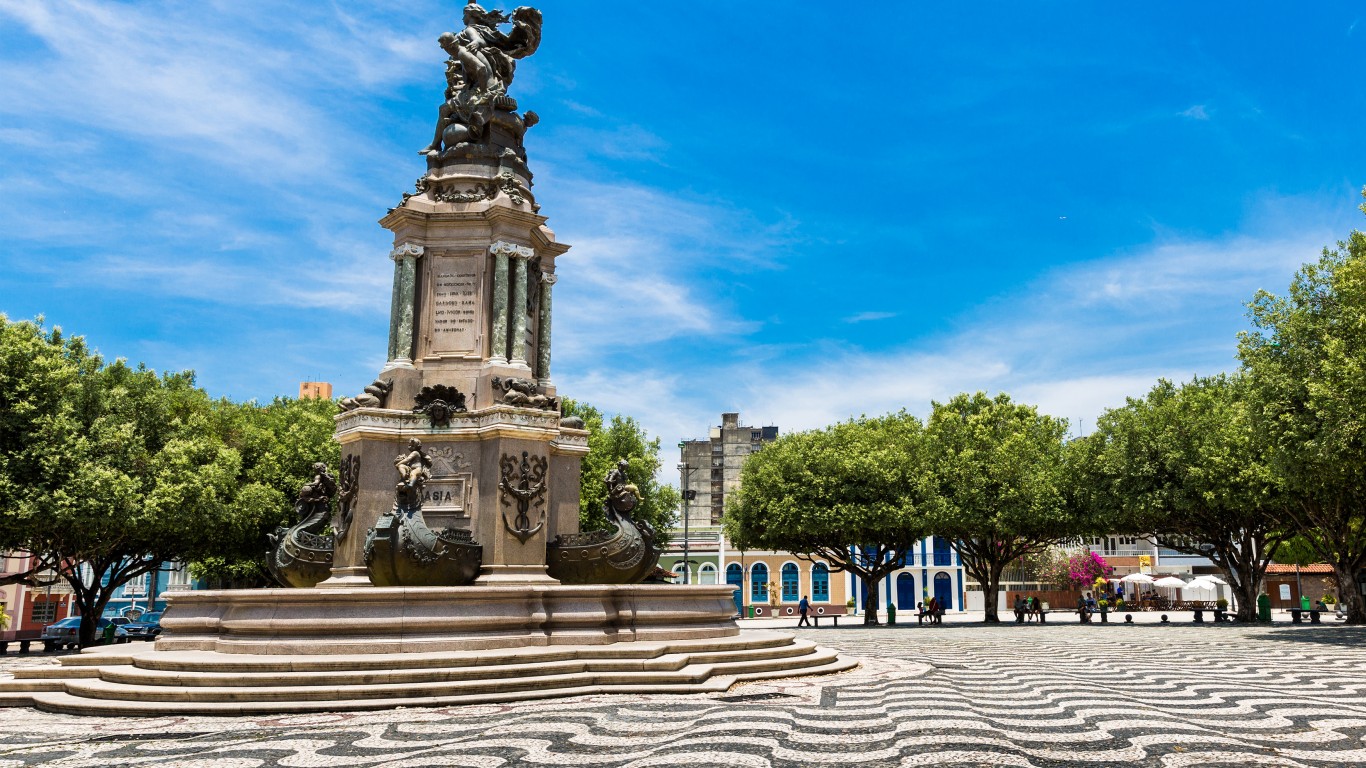
37. Manaus, Brazil
> Homicides per 100,000 in 2018: 44
> Homicides in 2018: 944
> Population: 2,145,444
The homicide rate in the most populous Amazonian city declined slightly in 2018 from 48.1 murders per 100,000 residents in 2017, but it’s still above the rate of 38.3 per 100,000 the year earlier. Two of the country’s biggest crime syndicates, Rio-based Comando Vermelho (Red Command) and Manus-based Família do Norte (Family of the North, or FDN), ended in 2018 a three-year truce in a battle over strategic drug trafficking routes in the region. Manaus is the capital of Amazonas, Brazil’s largest state by landmass.
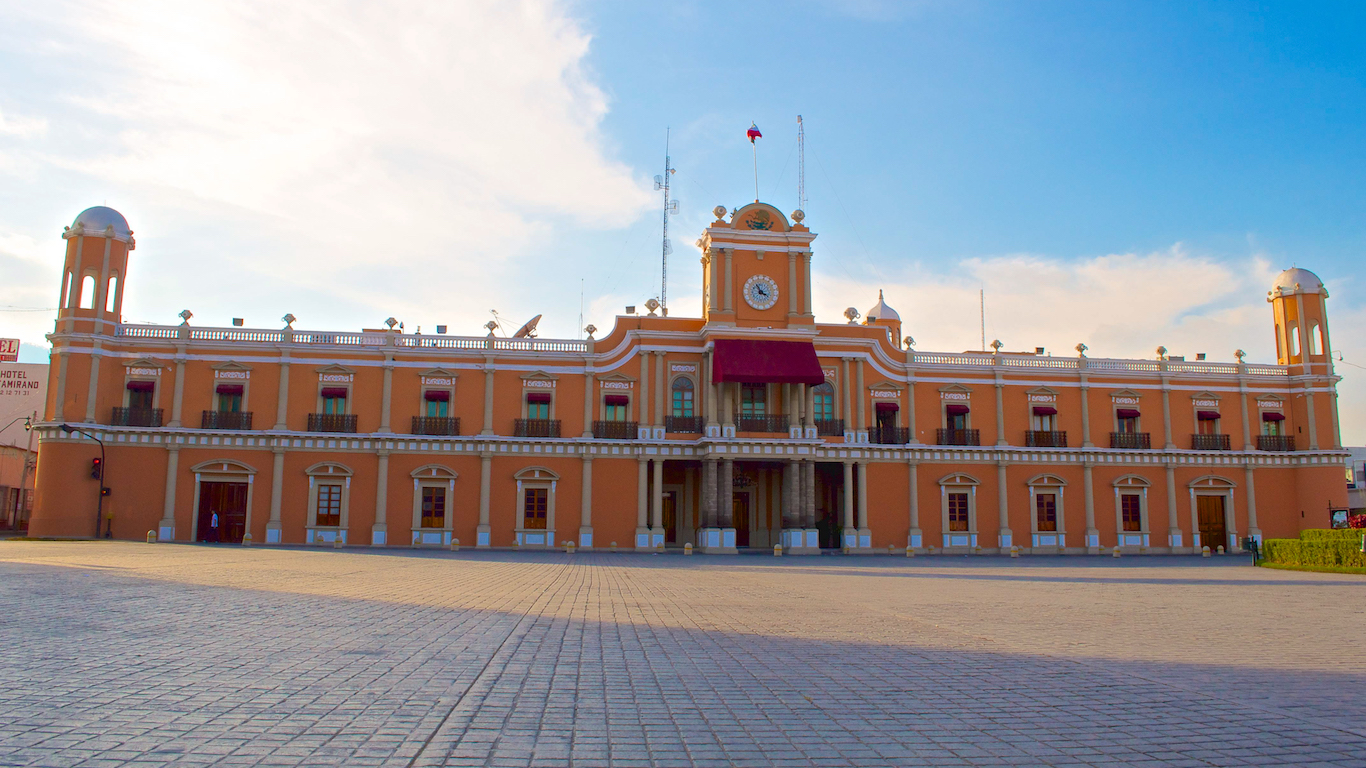
36. Tepic, Mexico
> Homicides per 100,000 in 2018: 45
> Homicides in 2018: 230
> Population: 512,387
Like Reynoa (No. 42 on this list), this capital of the western Nayarit state debuted on this annual list in 2017 with then a homicide rate of 47.1 murders per 100,000 residents, making it the 10th most dangerous Mexican city at the time. Though Tepic’s murder rate is relatively unchanged, the city has dropped to Mexico’s 13th most dangerous city because the murder rates in other Mexican cities increased. This provincial capital has experienced a sharp increase in gun-related homicides in the past couple of years, along with a regional rise in clashes between rival drug gangs.
[in-text-ad-2]
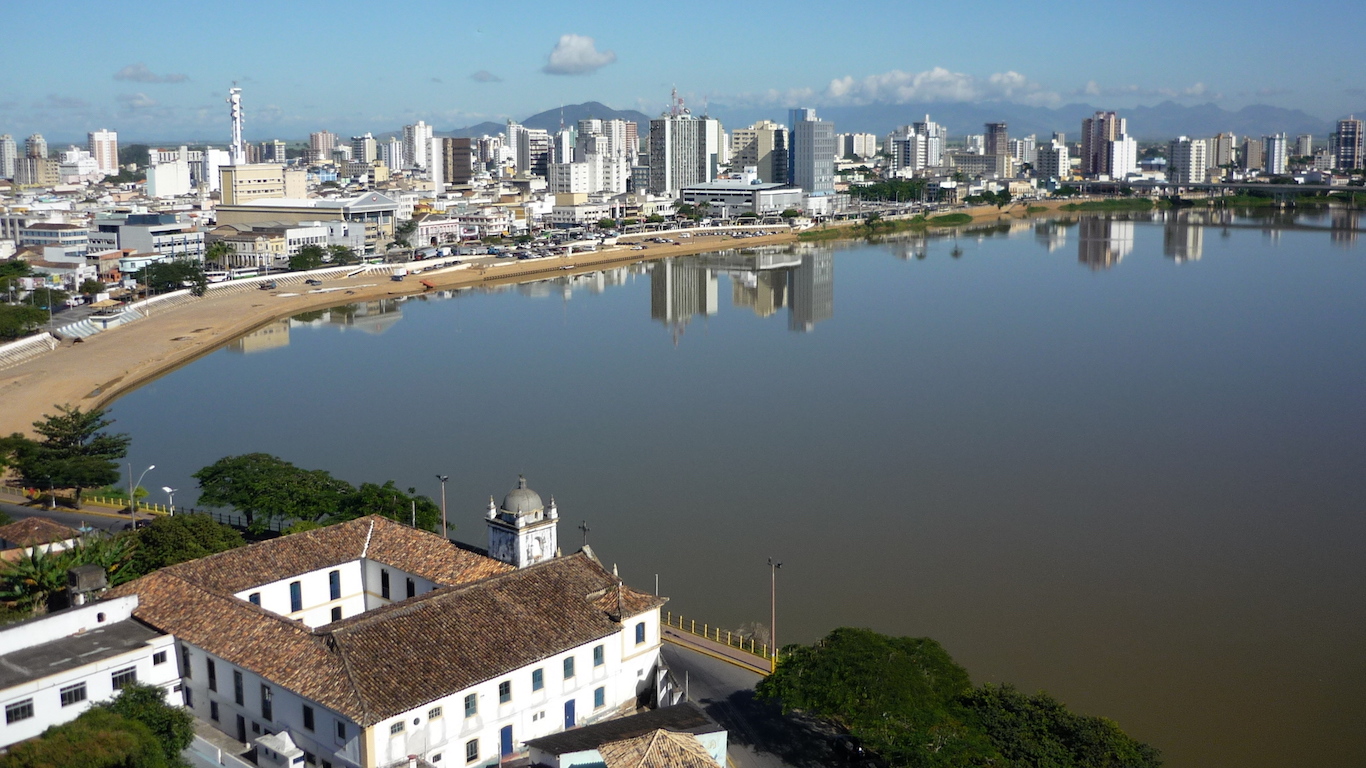
35. Campos dos Goytacazes, Brazil
> Homicides per 100,000 in 2018: 46
> Homicides in 2018: 233
> Population: 503,424
The homicide rate in this southeastern Brazilian municipality in the oil-rich southeast rebounded in 2018 after falling to 37.5 murders per 100,000 residents a year earlier, following a drastic jump to 56.5 per 100,000 in 2016. In 2018, the city, located about 170 miles northwest of Rio de Janeiro, was Brazil’s 10th most violent — in a country with an inordinate share of violent crime.
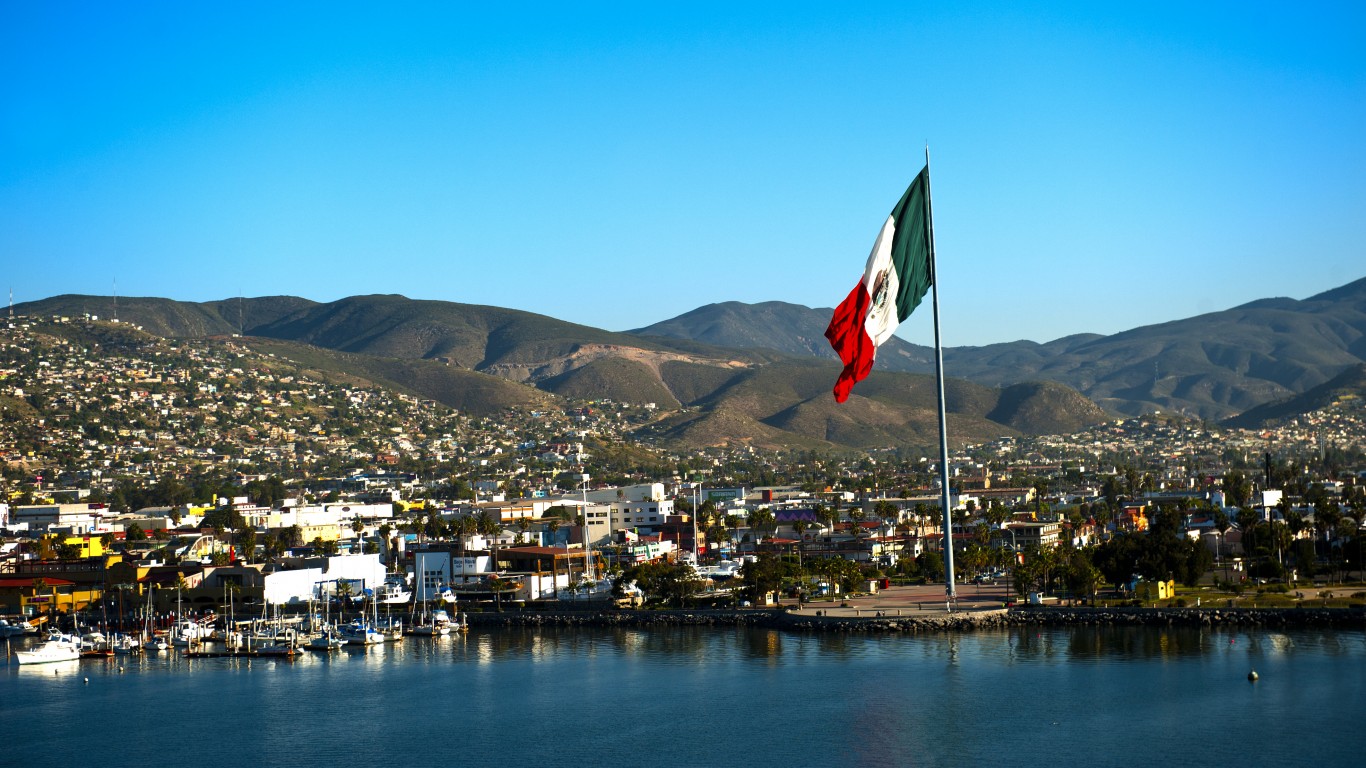
34. Ensenada, Mexico
> Homicides per 100,000 in 2018: 47
> Homicides in 2018: 253
> Population: 542,896
This coastal city on the Baja Peninsula, 65 miles south of Tijuana, is one of six Mexican cities debuting on this ranking amid a nationwide increase in violent crime. Ensenada has traditionally avoided cartel-related violence inflicting other parts of western Mexico, but like other Baja cities, the violence seems to be shifting its direction. In 2017, the tourist city of Los Cabos, on the tip of the Baja peninsula, was the world’s most dangerous city. Los Cabos fell from the list in 2018.
[in-text-ad]

33. San Pedro Sula, Honduras
> Homicides per 100,000 in 2018: 47
> Homicides in 2018: 363
> Population: 777,877
Just a few years ago, San Pedro Sula in the north of this tiny Central American country was the world’s murder capital. The homicide rate, which topped a staggering 187 murders per 100,000 residents in 2013, remained solidly above 100 until 2017. Since then, the murder rate has dropped by well more than half, to 47 per 100,000 in 2018.
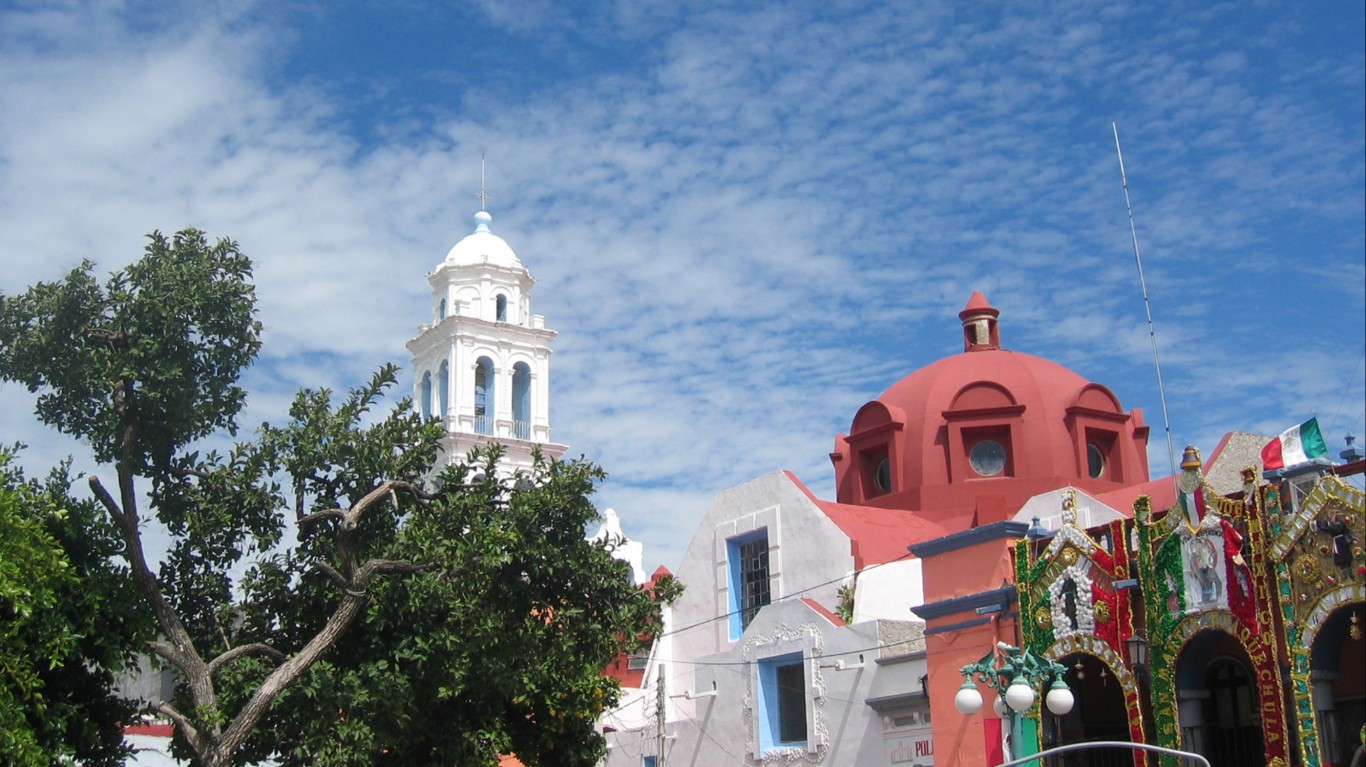
32. Celaya, Mexico
> Homicides per 100,000 in 2018: 47
> Homicides in 2018: 240
> Population: 510,787
Like Irapuato, located just 40 miles to the west, Celaya has debuted on the 2018 annual ranking largely due to a recent increase in violent criminal gang activity in Mexico’s central Guanajuato state, which has recently emerged as a hot zone for violent crime. Despite its proximity to Celaya and Irapuato (located less than 100 miles from both cities), the state capital Guanajuato City has so far avoided making the list.
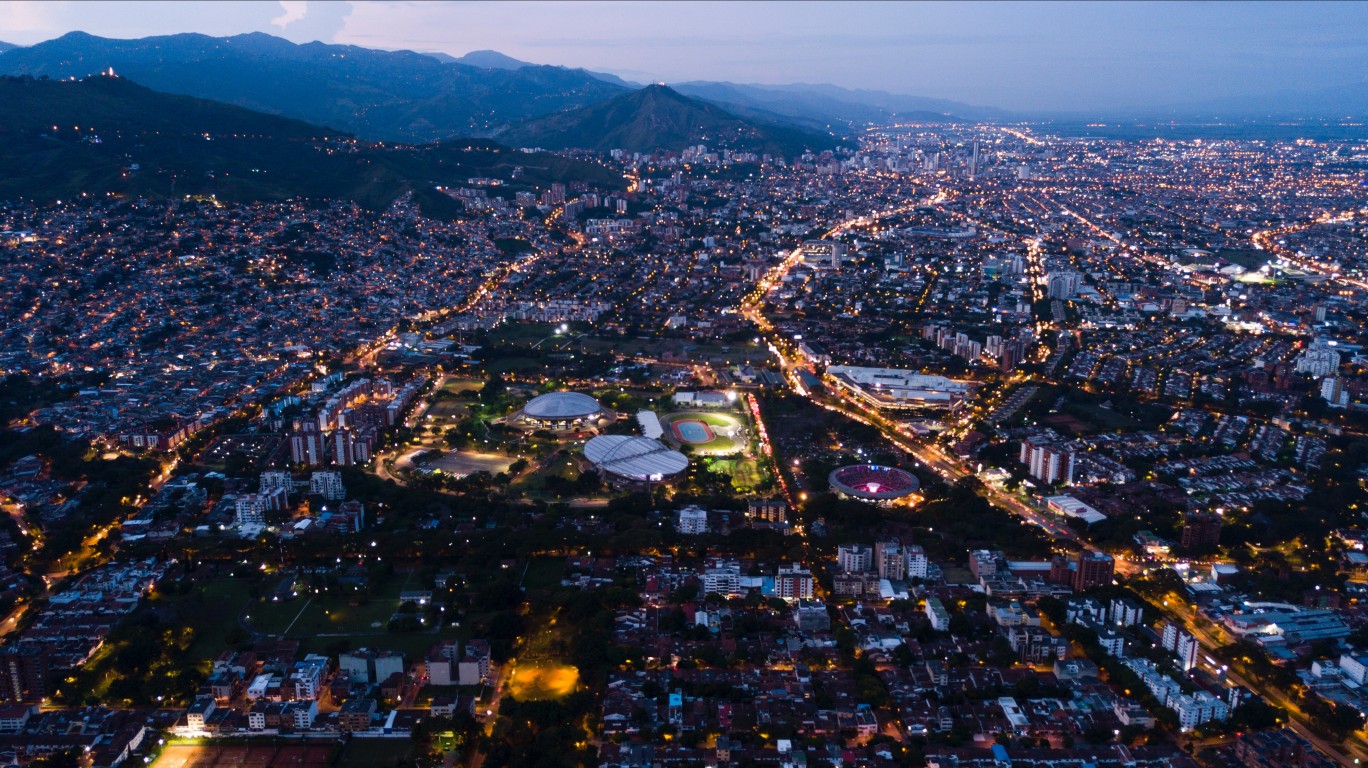
31. Cali, Colombia
> Homicides per 100,000 in 2018: 47
> Homicides in 2018: 1,209
> Population: 2,570,905
Once a target of the murderous Cali Cartel, this southwestern Colombia city is significantly safer from homicides than IT was just a few years ago. Cali lost the distinction of being the country’s murder capital IN 2018 to Palmira, the only other Colombian city on the latest annual report The Citizen Council for Public Security and Criminal Justice ranking.
The country’s homicide rates have dropped so much that four cities no longer appear on this list – at least for now.
[in-text-ad-2]
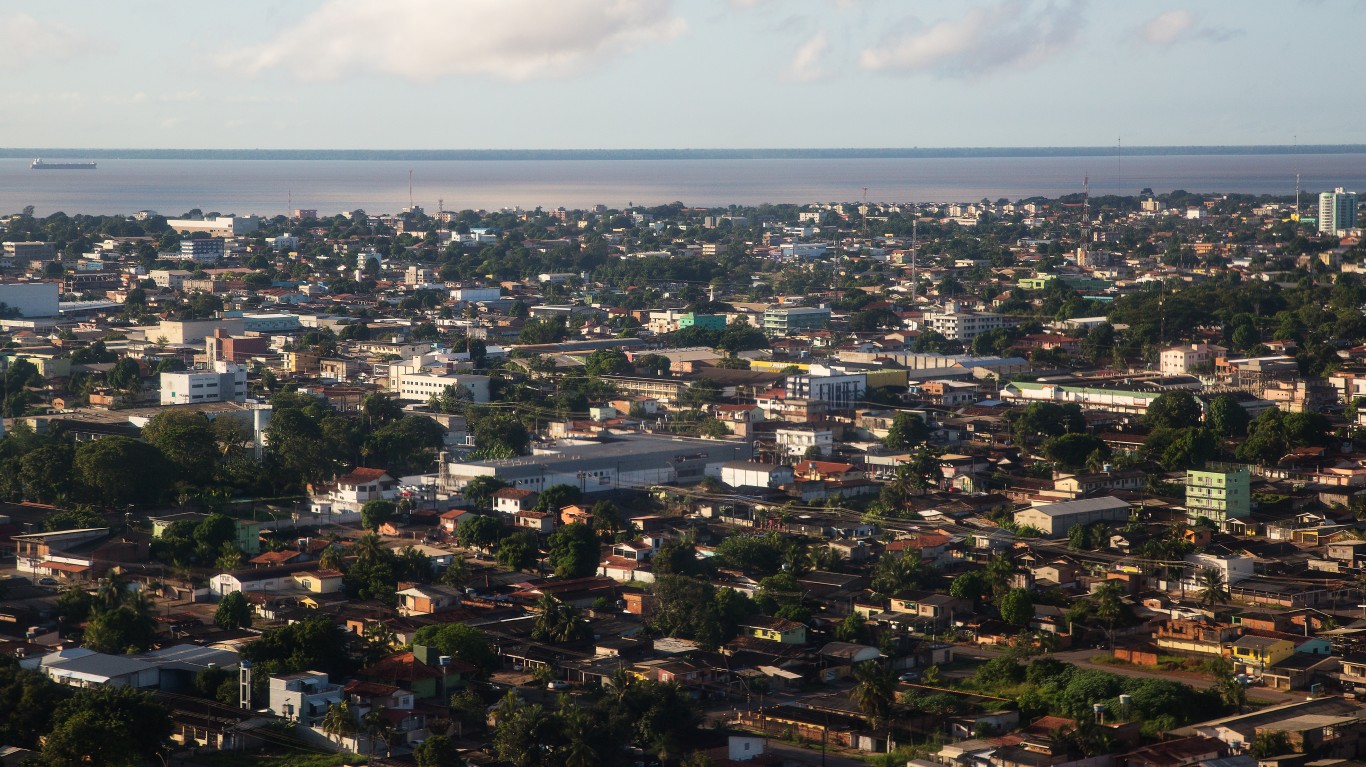
30. Macapá, Brazil
> Homicides per 100,000 in 2018: 47
> Homicides in 2018: 233
> Population: 493,634
Homicides in this northern mining and lumber city situated on the Amazon River delta increased in 2018 from 40.2 homicides per 100,000 residents in 2017 and 30.25 per 100,000 a year earlier. A 2015 study published in Mercator, a Brazilian academic journal, cited interpersonal violence, drug-gang activity, and conflicts between the police and the local population as the main causes of persistent violence and homicides in the capital of Ampá state.
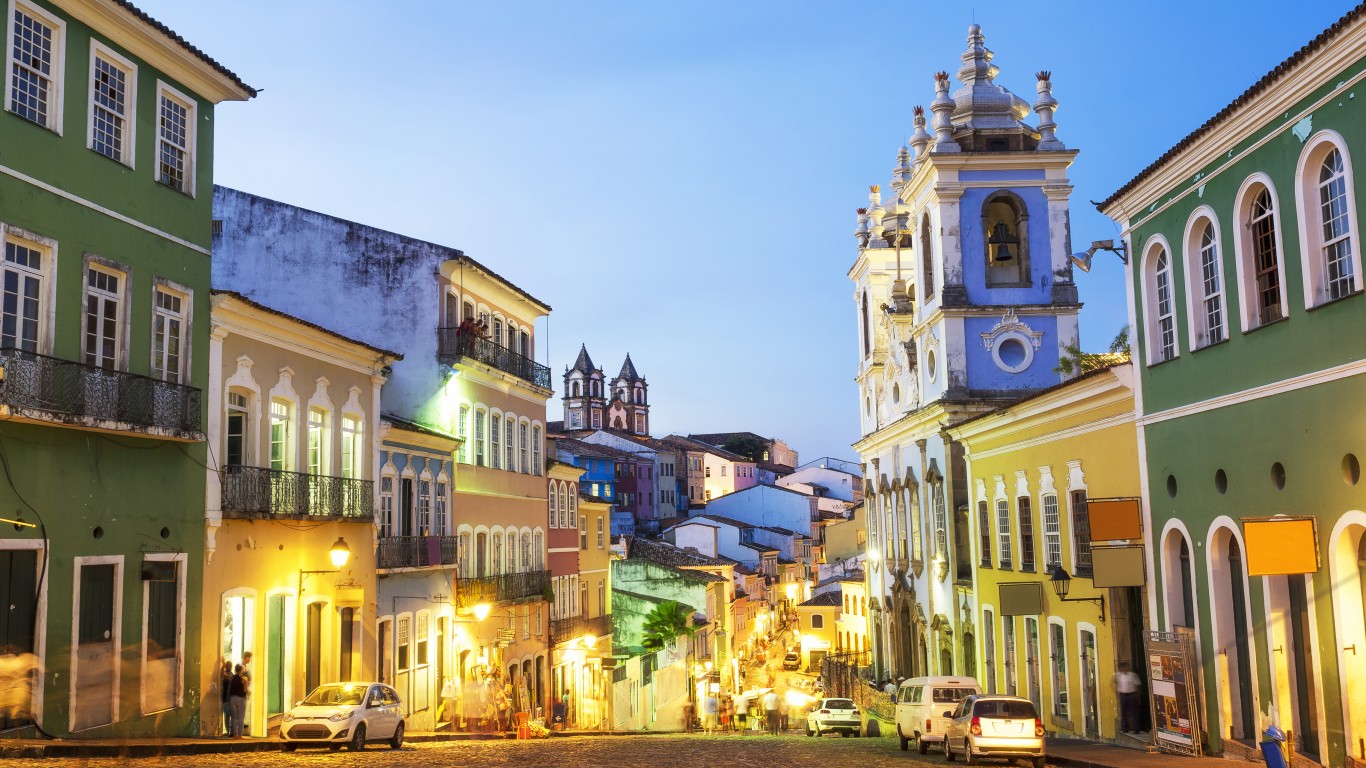
29. Salvador, Brazil
> Homicides per 100,000 in 2018: 47
> Homicides in 2018: 1,849
> Population: 3,914,996
The homicide rate in this northeastern Brazilian city in the state of Bahia declined slightly in 2018 from 51.6 murders per 100,000 residents in 2017. This is the third consecutive annual decline in the murder rate in Salvador after the rate nearly touched 70 per 100,000 in 2015, which put the city as the 14th most dangerous at the time. The former Portuguese colonial capital is situated at the entrance to the placid Bay of All Saints, Salvador and is a popular tourist destination.
[in-text-ad]

28. Maturín, Venezuela
> Homicides per 100,000 in 2018: 47
> Homicides in 2018: 257
> Population: 544,069
Located in an oil-rich region in eastern Venezuela, Maturín emerged for the first time on this annual ranking in 2015, with a murder rate strong enough for the city to debut as the world’s fifth and the country’s second most dangerous city that year. Since then, the homicide rate has declined considerably, and Maturín now ranks as the country’s fifth most dangerous and 28th in the global ranking.

27. Palmira, Colombia
> Homicides per 100,000 in 2018: 48
> Homicides in 2018: 149
> Population: 310,608
Colombia, recently a country ravaged by civil war and terrorist violence from drug cartels, may not have solved its cocaine-trafficking problem, but it has made significant progress in reeling back murders. Palmira is one of two Colombian cities still listed as one of the 50 most dangerous on this annual survey. But Palmira’s murder rate has fallen from nearly 71 homicides per 100,000 residents in 2015 to 48 per 100,000 in 2018. Perhaps more significant: Colombia now has only two cities on this list compared to three in 2017 and six in 2013.
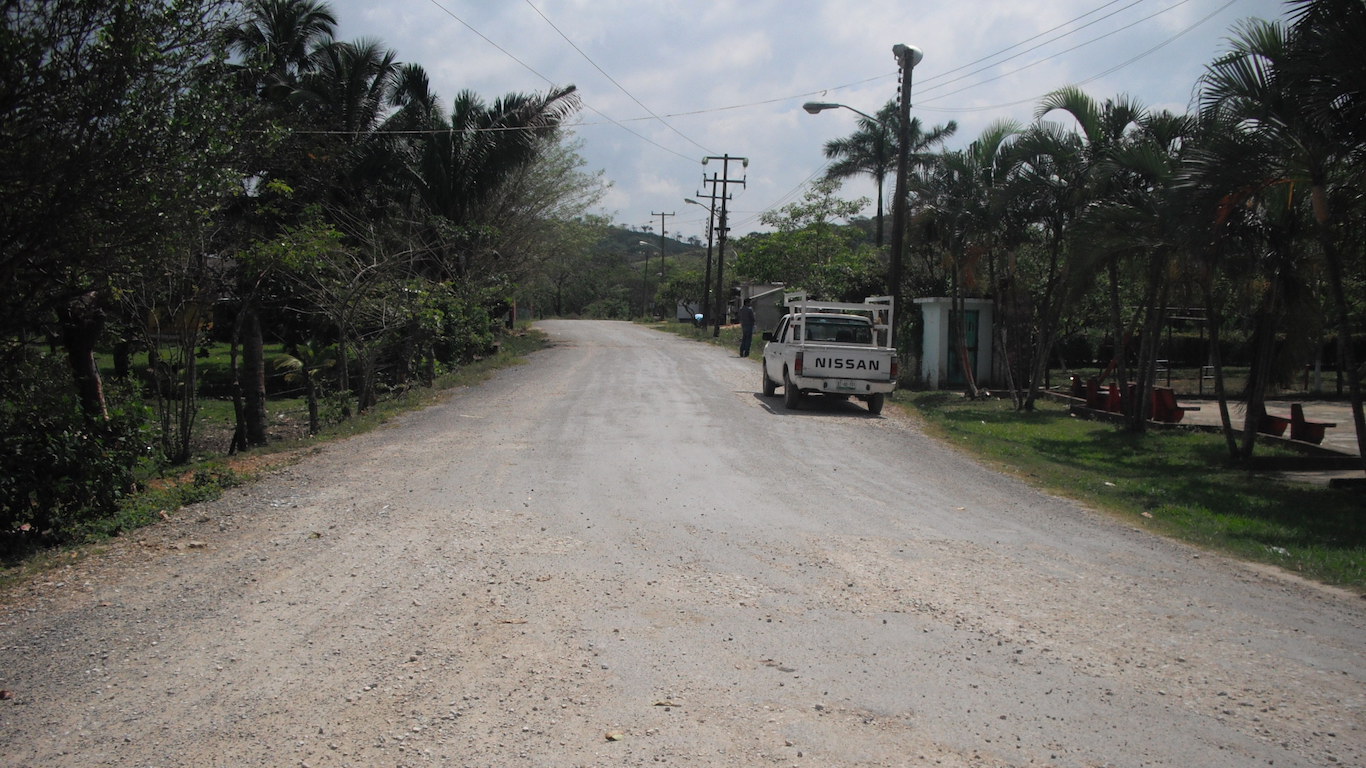
26. Coatzacoalcos, Mexico
> Homicides per 100,000 in 2018: 48
> Homicides in 2018: 162
> Population: 335,077
Another Mexican city to debut on this annual ranking amid a national rise in violent criminal activity is the major eastern port city of Coatzacoalcos, in the center of the country’s petrochemical sector. Like elsewhere, organized criminal gangs have increased their activities, including kidnapping and drug gang-related killings.
[in-text-ad-2]
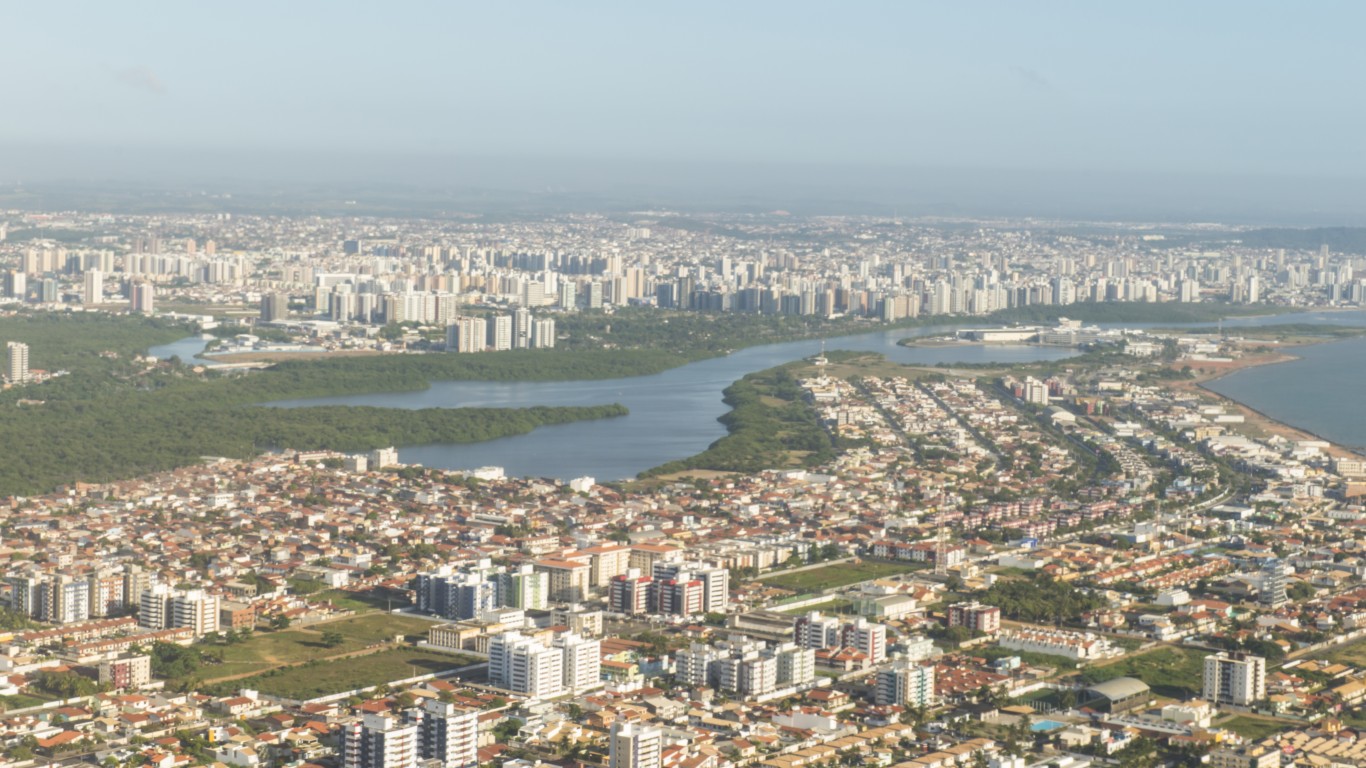
25. Aracaju, Brazil
> Homicides per 100,000 in 2018: 49
> Homicides in 2018: 463
> Population: 949,342
A popular coastal weekend getaway for Brazilians in the region, the capital of Sergipe, the country’s smallest state, experienced a drop in its homicide rate in 2018 from 58.9 murders per 100,000 residents in 2017. Thanks to improvements elsewhere, however, Aracaju’s rank among Brazil’s most dangerous cities rose to fifth highest from sixth the previous year. In 2016, the murder rate in the city exploded to nearly 63 per 100,000 from nearly 38 per 100,000 in 2015, pushing it down from the 15th most dangerous Brazilian city to third.
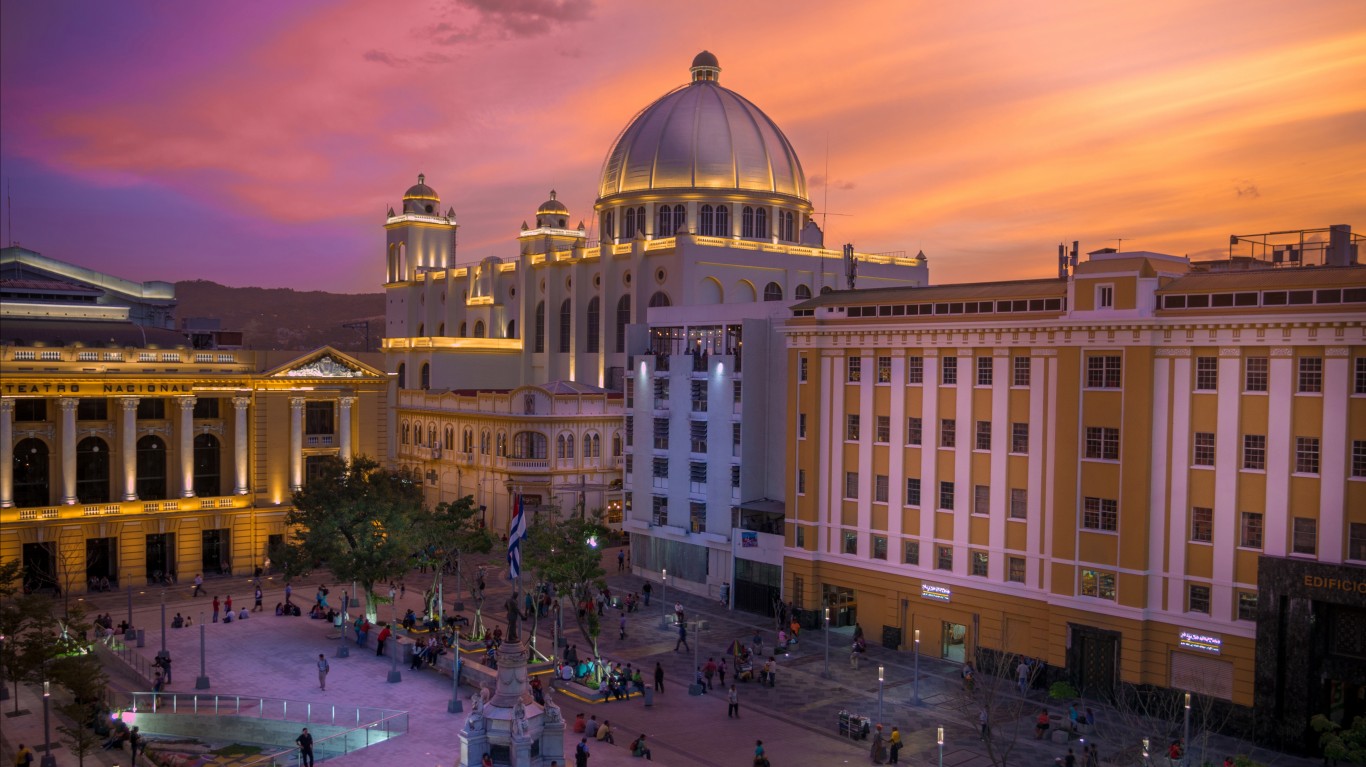
24. San Salvador, El Salvador
> Homicides per 100,000 in 2018: 50
> Homicides in 2018: 906
> Population: 1,800,336
El Salvador is one of the three Northern Triangle countries in Central America that have been the source of migrants fleeing high rates of violent crime. San Salvador’s homicide rate dropped last year to 50 murders per 100,000 residents, less than half the rate of nearly 109 per 100,00 in 2015, when the city ranked as having the third highest murder rate in the world.
[in-text-ad]
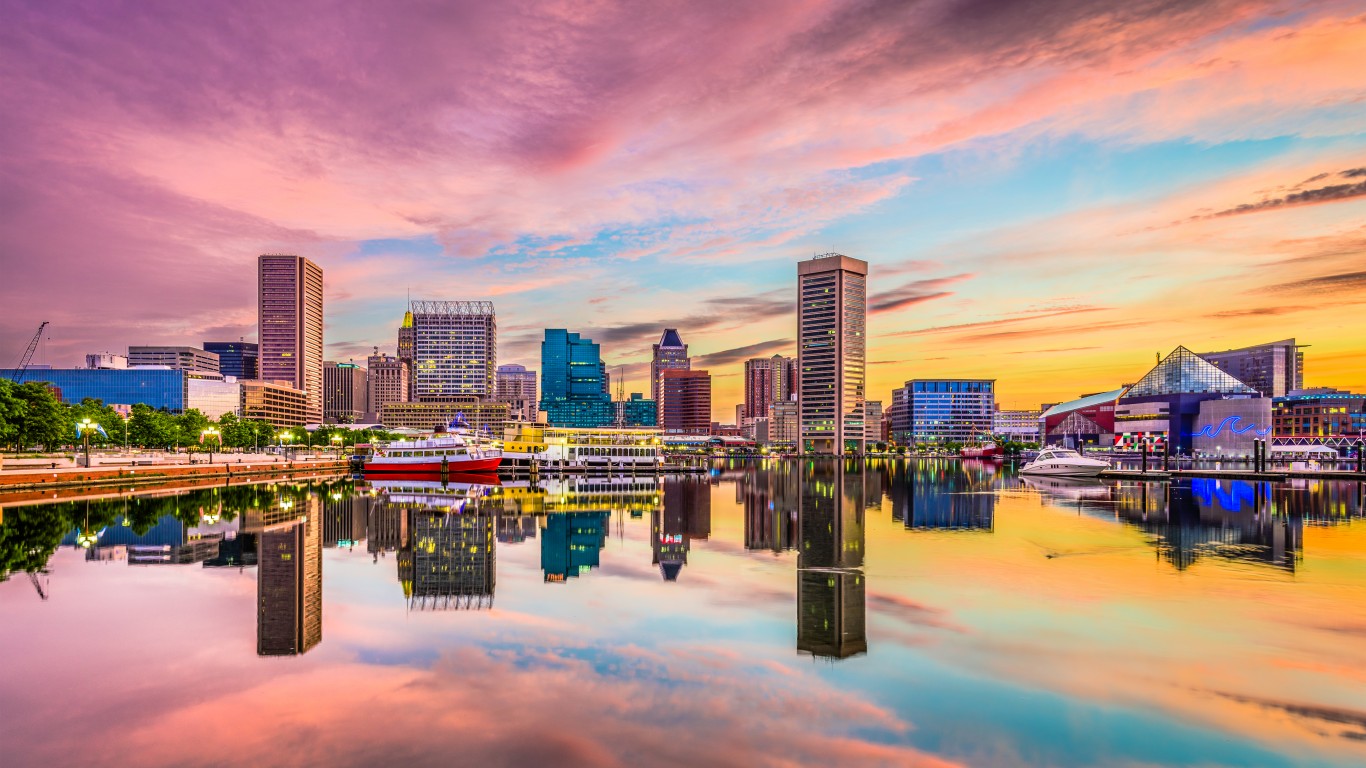
23. Baltimore, USA
> Homicides per 100,000 in 2018: 51
> Homicides in 2018: 309
> Population: 611,648
Despite a small drop in the murder rate in 2018, Baltimore remains the second most dangerous U.S. city, according to The Citizen Council for Public Security and Criminal Justice ranking. The city, however, dropped slightly on the global list from 21st place . Baltimore’s murder rate fell slightly in 2018 compared to its record high rate in 2017.
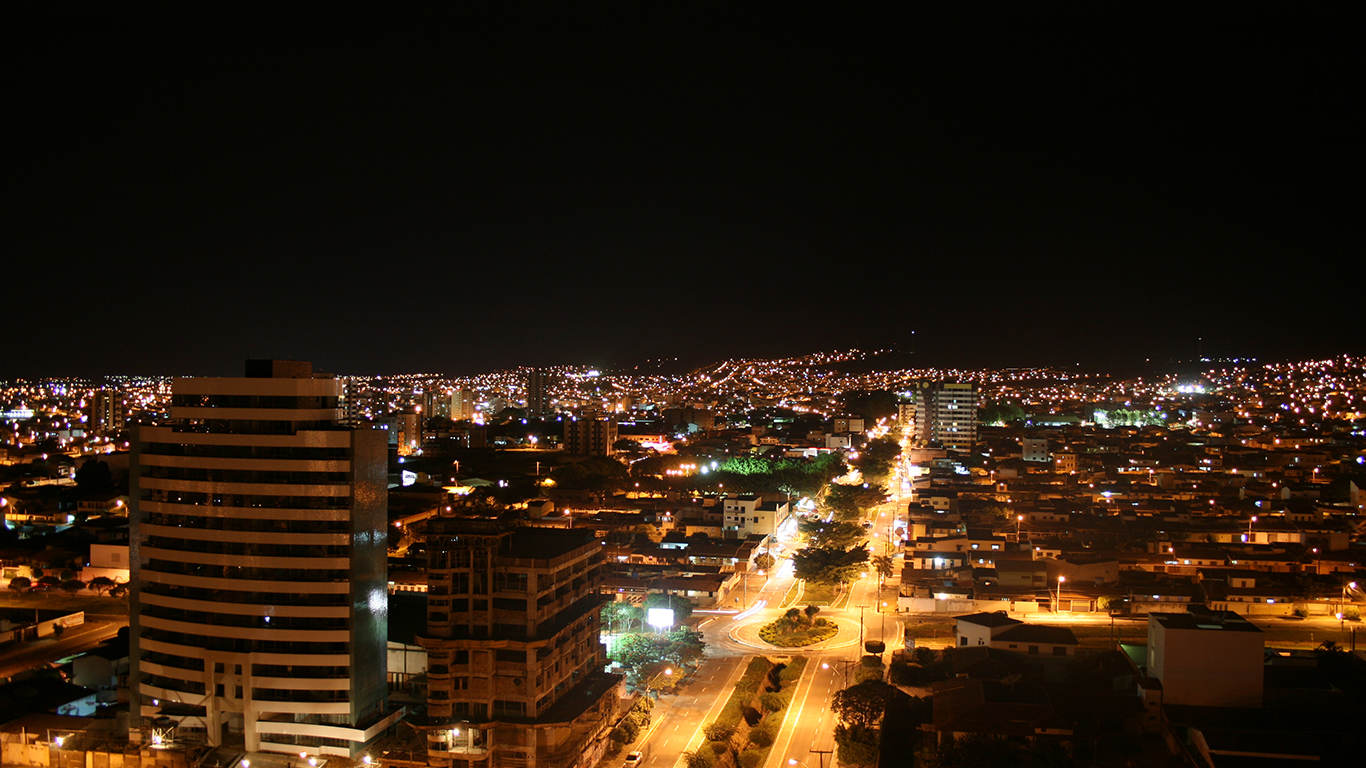
22. Vitória da Conquista, Brazil
> Homicides per 100,000 in 2018: 51
> Homicides in 2018: 172
> Population: 338,885
This inland commercial center of the country’s Bahia state experienced a significant reduction in the homicide rate after it ballooned to 70.3 murders per 100,000 residents in 2017, when the city ranked the 11th most dangerous in the world and the fourth most dangerous in Brazil. Despite the considerable improvement, the city only moved up only one spot on the list of Brazilian cities, to the fifth highest murder rate. It has been among the country’s 10 most dangerous cities since 2016.

21. Maceió, Brazil
> Homicides per 100,000 in 2018: 51
> Homicides in 2018: 521
> Population: 1,012,382
This modern beachfront capital city of the eastern Alagoas state ranks as Brazil’s fifth most dangerous city for a second consecutive year. The city’s homicide rate dropped from roughly 64 murders per 100,000 residents in 2017 to about 51 per 100,000 . The city’s murder rate was nearly 80 per 100,000 in 2013, at the time placing it as Brazil’s murder capital and the world’s fifth most dangerous city. Maceió is situated between the coastal cities of Recife and Aracaju, which are each on this list.

20. Ciudad Obregón, Mexico
> Homicides per 100,000 in 2018: 52
> Homicides in 2018: 179
> Population: 343,613
This northwestern Mexican city debuted on this annual ranking in 2014 with a homicide rate of 37.7 murders per 100,000 residents, the world’s 31st and Mexico’s fourth most dangerous city that year. After nearly dropping from the list in 2015, ranking 50th that year, the murder rate rose to 52 per 100,000 in 2018 largely due to local rival drug-gang violence.

19. Kingston, Jamaica
> Homicides per 100,000 in 2018: 54
> Homicides in 2018: 639
> Population: 1,180,771
Local organized crime drove the homicide rate in Jamaica’s capital city to a recent peak of nearly 60 murders per 100,000 residents in 2017. That rate has declined to 54 per 100,000 in 2018, pushing Kingston’s ranking up from 16th to 19th in this annual list of the world’s 50 most dangerous cities that started with 2013 data.
[in-text-ad-2]

18. Uruapan, Mexico
> Homicides per 100,000 in 2018: 55
> Homicides in 2018: 189
> Population: 346,640
A recent increase in violent crime has put this highland inland city on this list of the world’s most dangerous cities for the first time since records began in 2013. Violent crime, largely in the form of gun-related homicides, continued in 2019, despite reported heightened security operations. The governor of Michoacán state has pledged to further increase police presence to stem a rising tide of organized criminal activity.

17. Barquisimeto, Venezuela
> Homicides per 100,000 in 2018: 57
> Homicides in 2018: 683
> Population: 1,205,142
Venezuela’s fourth most populous city became its fourth most dangerous in 2018. The city’s murder rate rose from 8.2 per 100,000 residents in 2017 to 57 per 100,000 residents in 2018. The murder rate has hovered between 46 and 60 per 100,000 residents since 2014.
[in-text-ad]
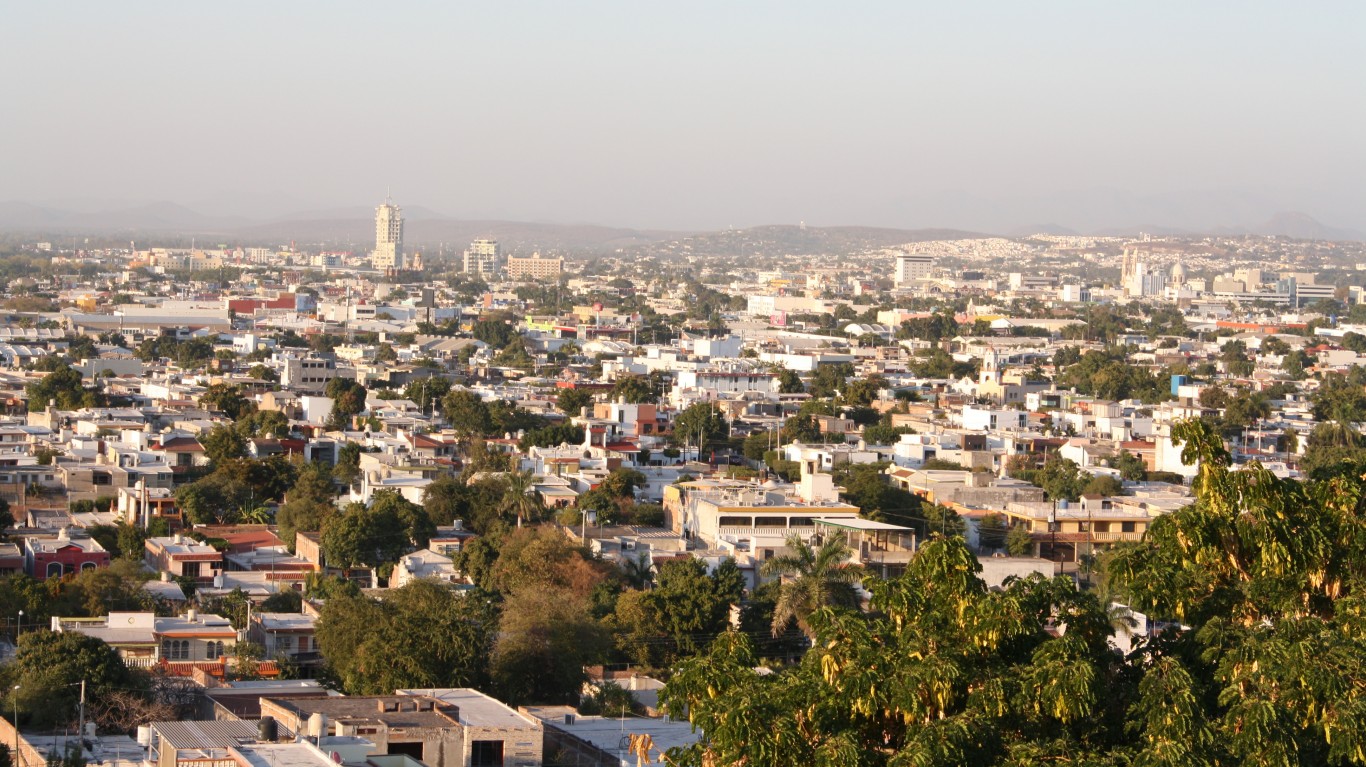
16. Culiacán, Mexico
> Homicides per 100,000 in 2018: 61
> Homicides in 2018: 585
> Population: 966,609
The capital of northwestern Sinaloa state has a long history as a center of drug cartel activity, and though it ranks high among Mexico’s most dangerous cities, it’s fallen from second place in 2014 to seventh in 2018. The homicide rate declined in 2018 from 70.1 murders per 100,000 residents in 2017. Like other cities in Mexico’s northwest and border regions, Culiacán struggles to contain drug-gang gun violence with only a recent modest decline in killings.
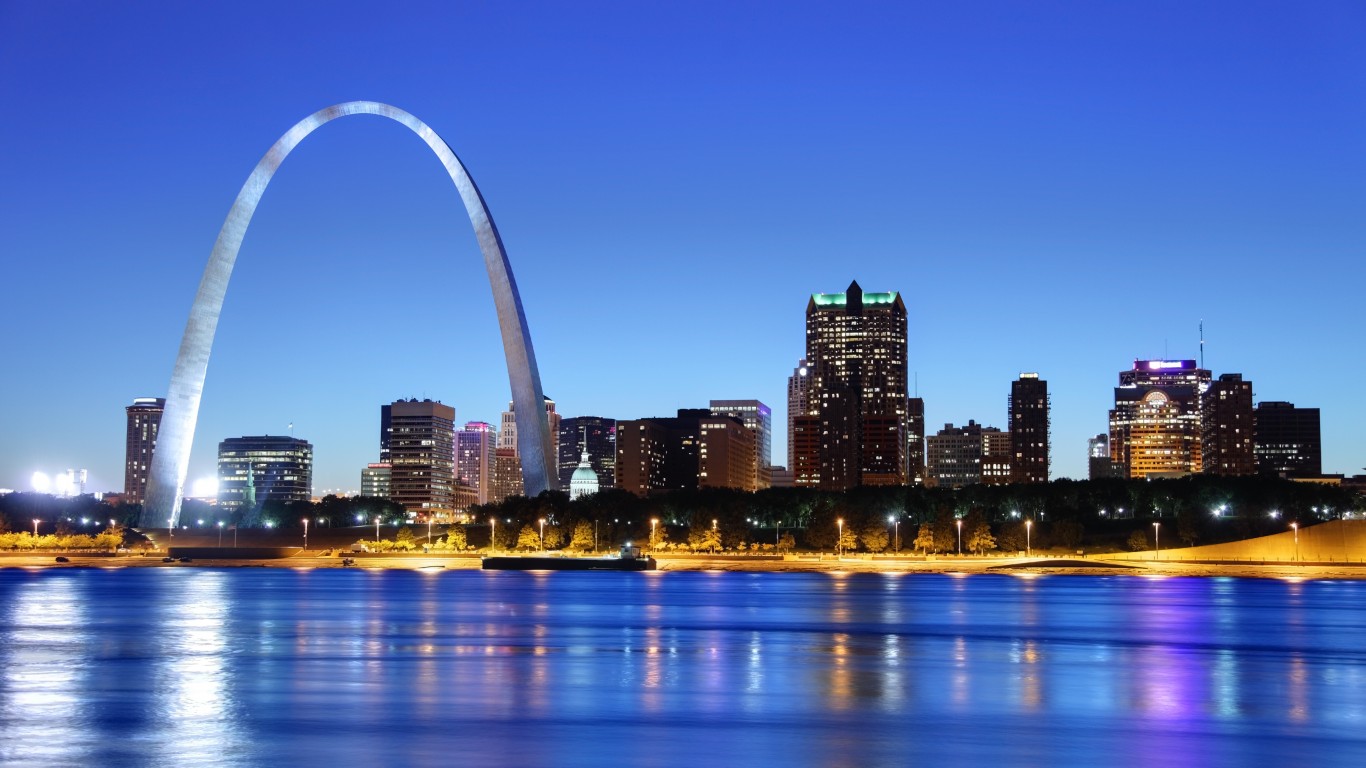
15. St. Louis, USA
> Homicides per 100,000 in 2018: 61
> Homicides in 2018: 187
> Population: 308,626
Chicago is often derided for its violent crime, but St. Louis, Missouri, has been the murder capital of the United States since 2014, while Chicago has never made this list. The homicide rate in St. Louis declined in 2018 to 61 murders per 100,000 residents from nearly 66 per 100,000 in 2017. The last time the rate was below 50 was in 2013 (the first year of this annual report), when the murder rate was 34 per 100,000 and St. Louis as the fourth most dangerous U.S. city.

14. Feira de Santana, Brazil
> Homicides per 100,000 in 2018: 63
> Homicides in 2018: 386
> Population: 609,913
Located roughly 60 miles northwest of Salvador, Brazil (ranked 29th on this list), the homicide rate in this inland city increased in 2018 from 58.8 murders per 100,000 residents in 2017. This is the fourth consecutive year that Feira de Santana appears on this annual report. The city is a major commercial center for Bahia state, making it an ideal conduit for regional drug trafficking.
[in-text-ad-2]
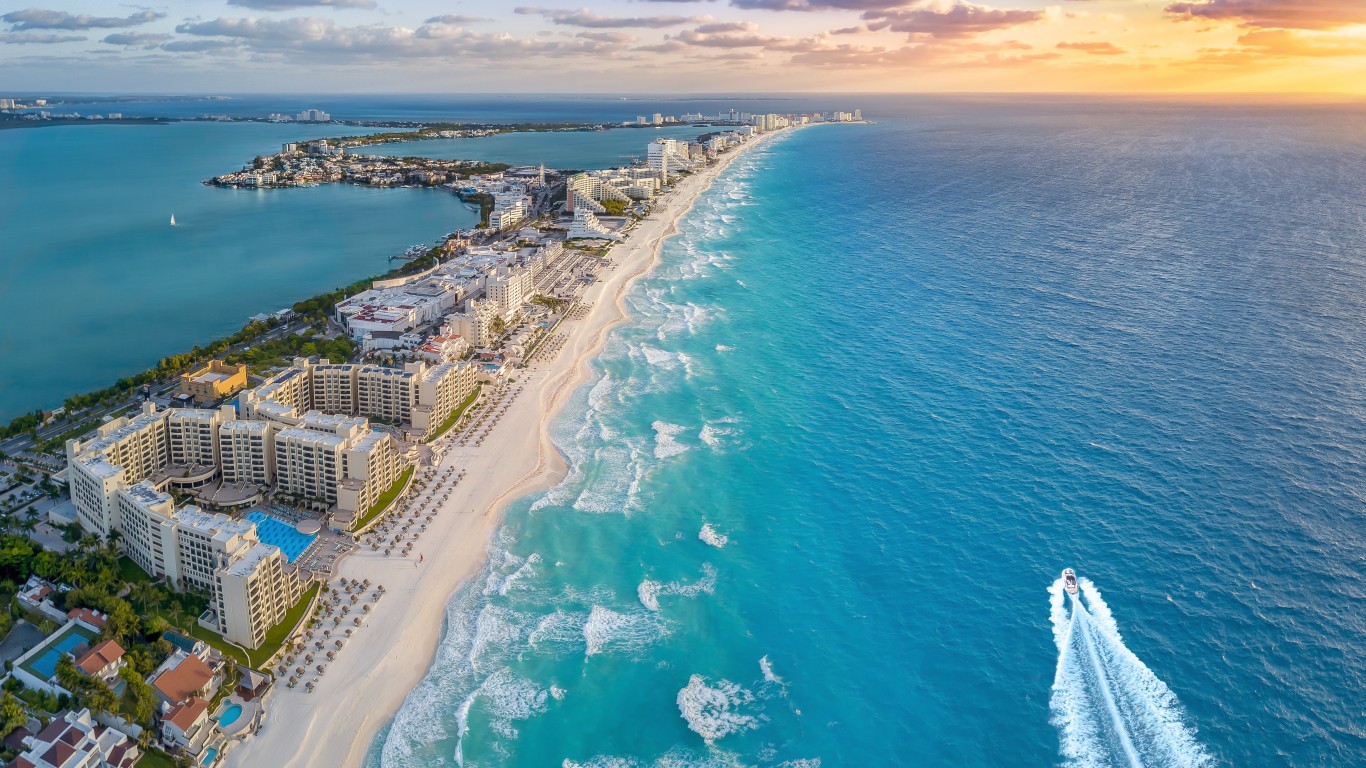
13. Cancún, Mexico
> Homicides per 100,000 in 2018: 64
> Homicides in 2018: 547
> Population: 848,465
The popular tourist destination of Cancún on the country’s Caribbean coast has emerged for the first time on this annual ranking. The local murder rate more than doubled in 2018 as violence escalated amid a nationwide record-breaking homicide rate in 2018 attributed to drug and non-drug related criminal gang violence. More Mexican cities have appeared on this list for the first time than the number cities that dropped from the list last year.
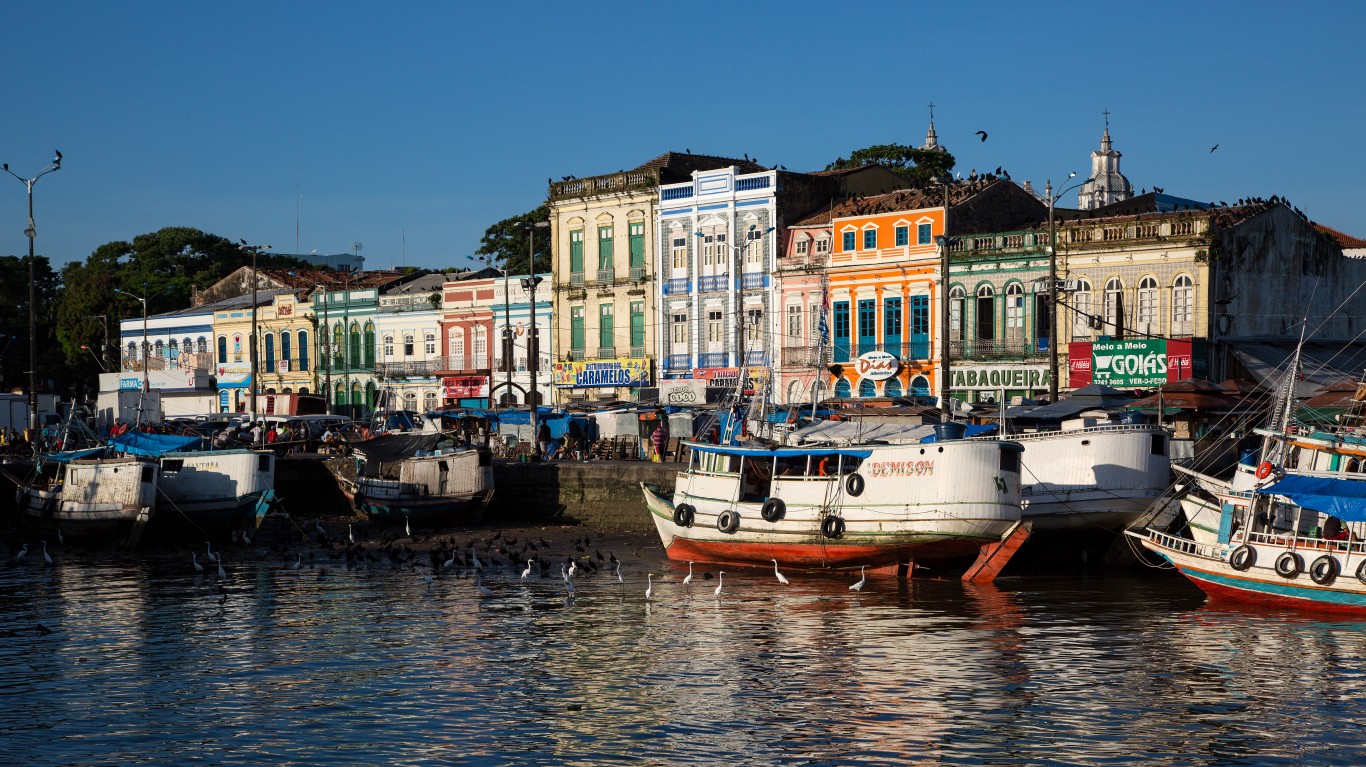
12. Belém, Brazil
> Homicides per 100,000 in 2018: 65
> Homicides in 2018: 1,627
> Population: 2,491,052
This eastern gateway city in the lush Amazon region, the capital of Pará (Brazil’s second largest state by landmass) is Brazil’s third most dangerous city for a second consecutive year. The city was the country’s second most dangerous city in 2016 with a rate of 67.4 homicides per 100,000 residents. The rate increased a year later, to 71.4 per 100,000, but the city’s ranking among Brazil’s most dangerous cities fell from second to third place in 2017 because of a sharper increase in murders in Fortaleza (No. 9 on this list) and Natal (No. 8 on this list).
[in-text-ad]

11. Cape Town, South Africa
> Homicides per 100,000 in 2018: 66
> Homicides in 2018: 2,868
> Population: 4,322,031
South Africa’s legislative capital is consistently also the country’s murder capital, with a homicide rate that hit a record high since the first edition of the annual report by The Citizen Council for Public Security and Criminal Justice in 2013. The murder rate increased last year to 66 homicides per 100,000 residents following two consecutive annual declines from 65.5 per 100,000 in 2015. Cape Town also fell in the ranks from the world’s 15th most dangerous city in 2017 to 11th in 2018. In 2015, the city was the top 10 most dangerous cities on this list, at No. 9.

10. Ciudad Bolívar, Venezuela
> Homicides per 100,000 in 2018: 69
> Homicides in 2018: 264
> Population: 382,095
Violent crime has flourished as Venezuela has been in the process of collapsing into a failed state. Ciudad Bolívar, located 75 miles up the Orinoco River from Guyana City (No. 7 on this list), debuted in 2018 on this list of the 50 world’s most dangerous cities. In addition to the rise in violent crime in the city, Bolivar was flooded in August of last year. This may lead to a rise in opportunistic criminal activity.
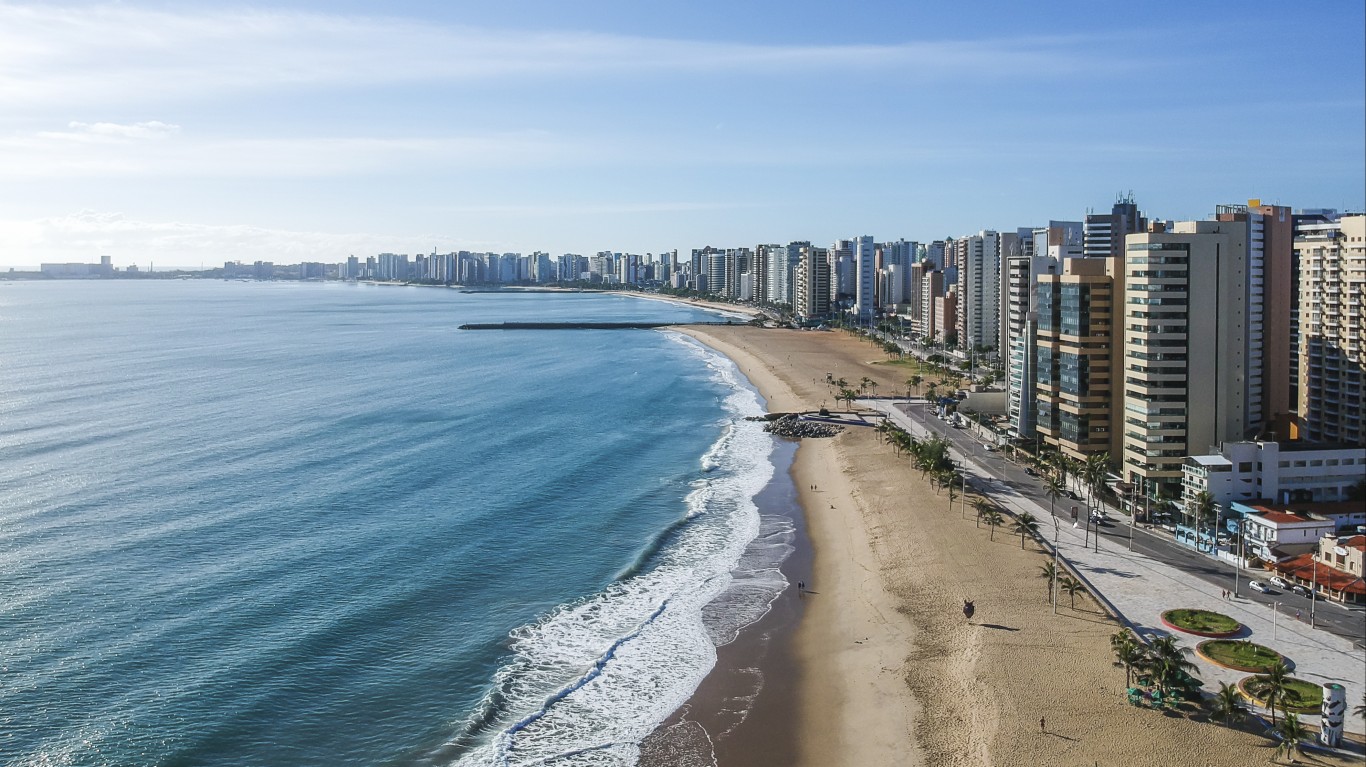
9. Fortaleza, Brazil
> Homicides per 100,000 in 2018: 69
> Homicides in 2018: 2,724
> Population: 3,939,460
The murder rate in one of Brazil’s biggest cities dropped from 83.5 homicies per 100,000 residents in 2017, the highest rate for the city in over five years. Located about 1,400 miles north of São Paulo, the capital of northeastern Ceará state, Fortaleza was Brazil’s second most dangerous city last year.
[in-text-ad-2]

8. Natal, Brazil
> Homicides per 100,000 in 2018: 75
> Homicides in 2018: 1,185
> Population: 1,587,055
The capital and largest city in Rio Grande do Norte, the second largest oil-producing state in Brazil, experienced a decline in the homicide rate from nearly 103 murders per 100,000 residents in 2017 to 75 per 100,000 in 2018. Fortaleza (ranked ninth on this list) slightly edged out Natal as the country’s most dangerous city in 2015. But since then, Natal, a port city 120 miles up the coast from João Pessoa (44th on this list), has been country’s murder capital for three consecutive years.
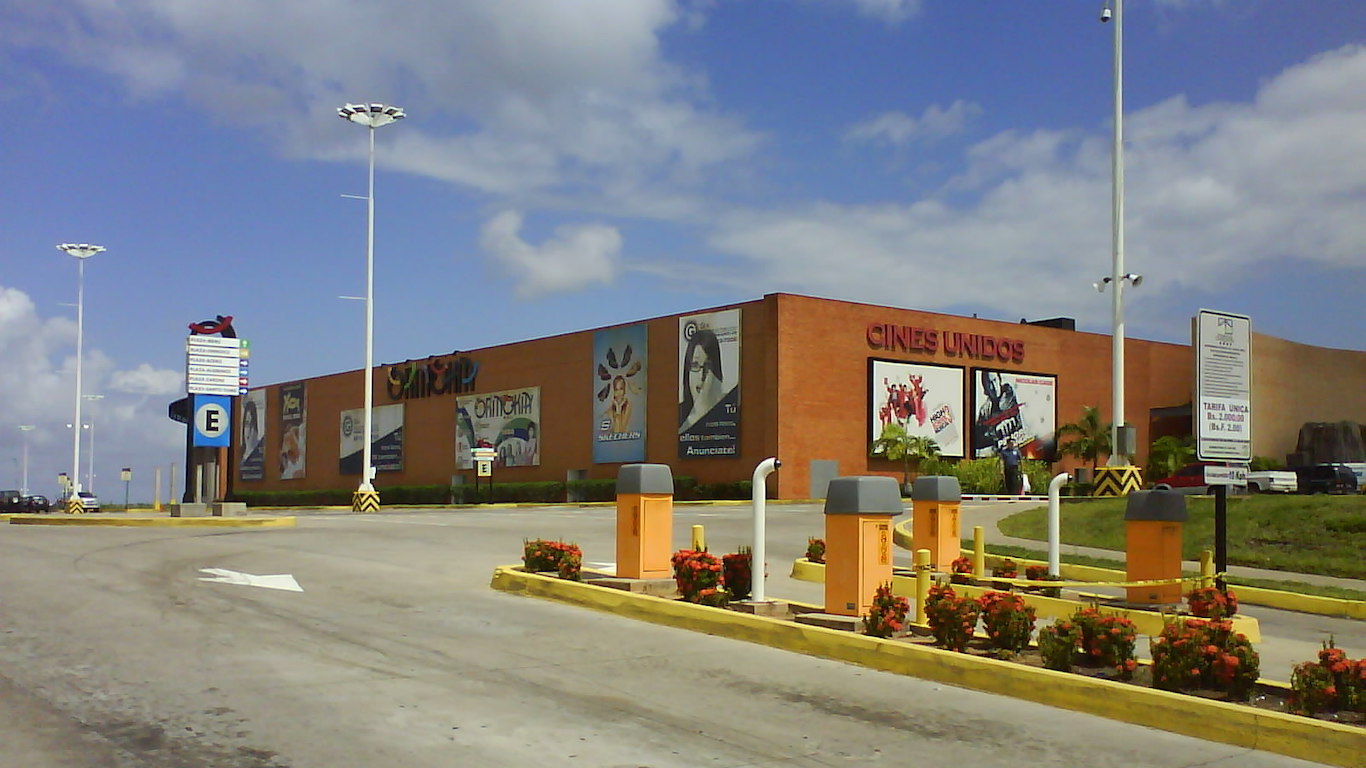
7. Ciudad Guayana, Venezuela
> Homicides per 100,000 in 2018: 78
> Homicides in 2018: 645
> Population: 823,722
This Venezuelan port city on the banks of the Orinoco River is Venezuela’s second most dangerous city for the second consecutive year despite a slight drop in the homicide rate last year, from 80.3 murders per 100,000 residents in 2017. Violent crime appears to be spreading along the Orinoco, with Ciudad Bolivar, 65 miles west of Guyana City, appearing on this list for the first time at No. 10. Like elsewhere in the country, the region’s cities are struggling with food scarcities and high crime amid Venezuela’s years-long and worsening economic and security crisis.
[in-text-ad]

6. Irapuato, Mexico
> Homicides per 100,000 in 2018: 81
> Homicides in 2018: 473
> Population: 580,808
A newcomer to this annual ranking, Irapuato has debuted with 81 murders per 100,000 residents in 2018. Suddenly, this lush city in the center of Mexico’s Guanajuato state, known for its scenic gardens, has become Mexico’s fifth most dangerous city. Irapuato has been sucked into a regional rise in criminal gang activity, including kidnappings and extortion.

5. Ciudad Juárez, Mexico
> Homicides per 100,000 in 2018: 86
> Homicides in 2018: 1,251
> Population: 1,462,133
This border city of over 1.4 million people across the river from El Paso experienced a sharp increase in murders in 2018, with the murder rate rising from 56.2 homicides per 100,000 residents in 2017 to 86 per 100,000. The city appeared first on this list with a homicide rate of nearly 38 per 100,000 residents in 2013, at the time Mexico’s seventh most dangerous city. The city fell off the list in 2015 but reappeared a year later. Since then, the homicide rate has increased in each of the past three consecutive years, and Juárez now has the third highest murder rate in Mexico.

4. Ciudad Victoria, Mexico
> Homicides per 100,000 in 2018: 86
> Homicides in 2018: 314
> Population: 365,089
The capital of Tamaulipas state, at Mexico’s northeastern border with Texas, has been ravaged in recent years by turf wars between offshoot gangs that split off from the Gulf and Zeta cartels in the wake of heightened security operations. Killings flared in 2016, when the city’s homicide rate jumped to nearly 85 murders per 100,000 residents from just over 30 per 100,00 a year earlier. Victoria is currently Mexico’s third most dangerous city.
[in-text-ad-2]
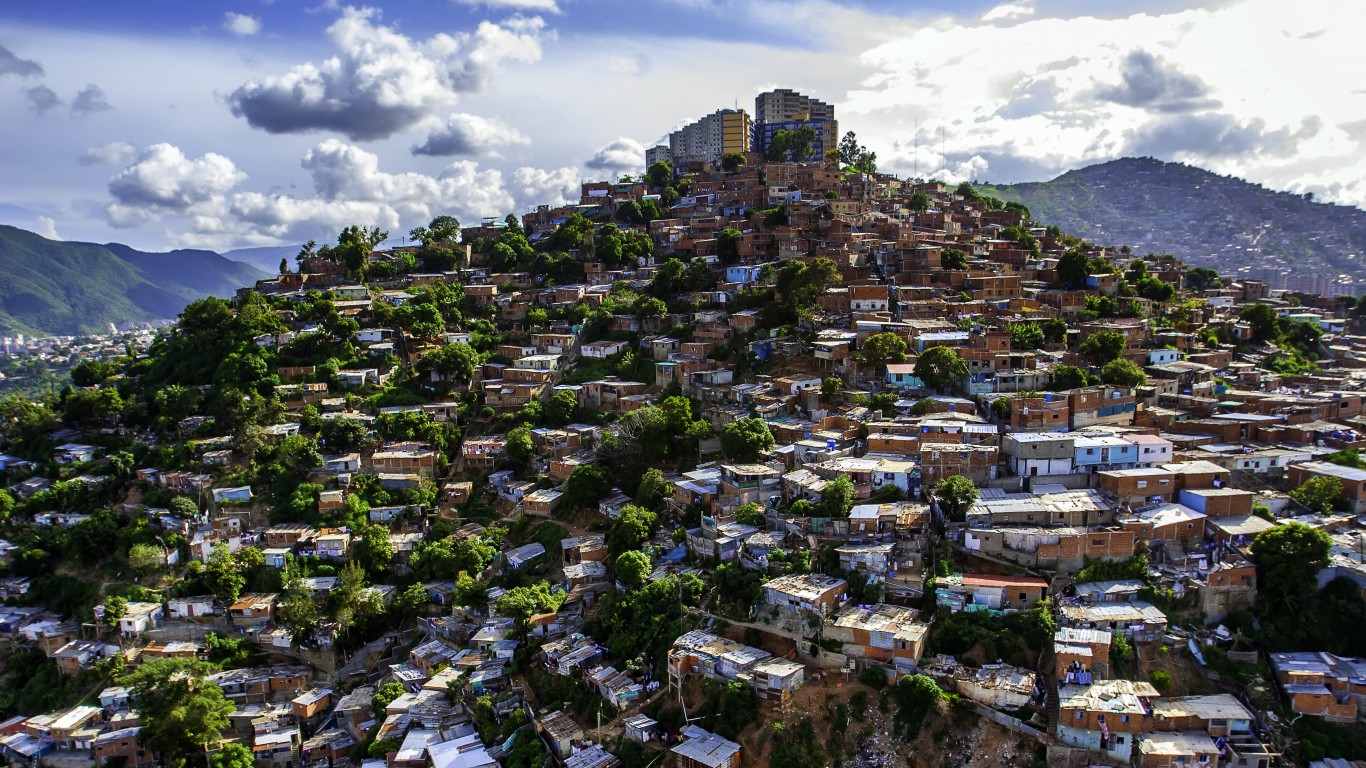
3. Caracas, Venezuela
> Homicides per 100,000 in 2018: 100
> Homicides in 2018: 2,980
> Population: 2,980,492
Caracas holds the dubious distinction of being the world’s most dangerous national capital each year since data was first compiled for the study in 2013. It’s also been either the most or second most dangerous city on this annual ranking until it fell to third place in 2018, displaced by the Mexican cities of Tijuana and Acapulco.
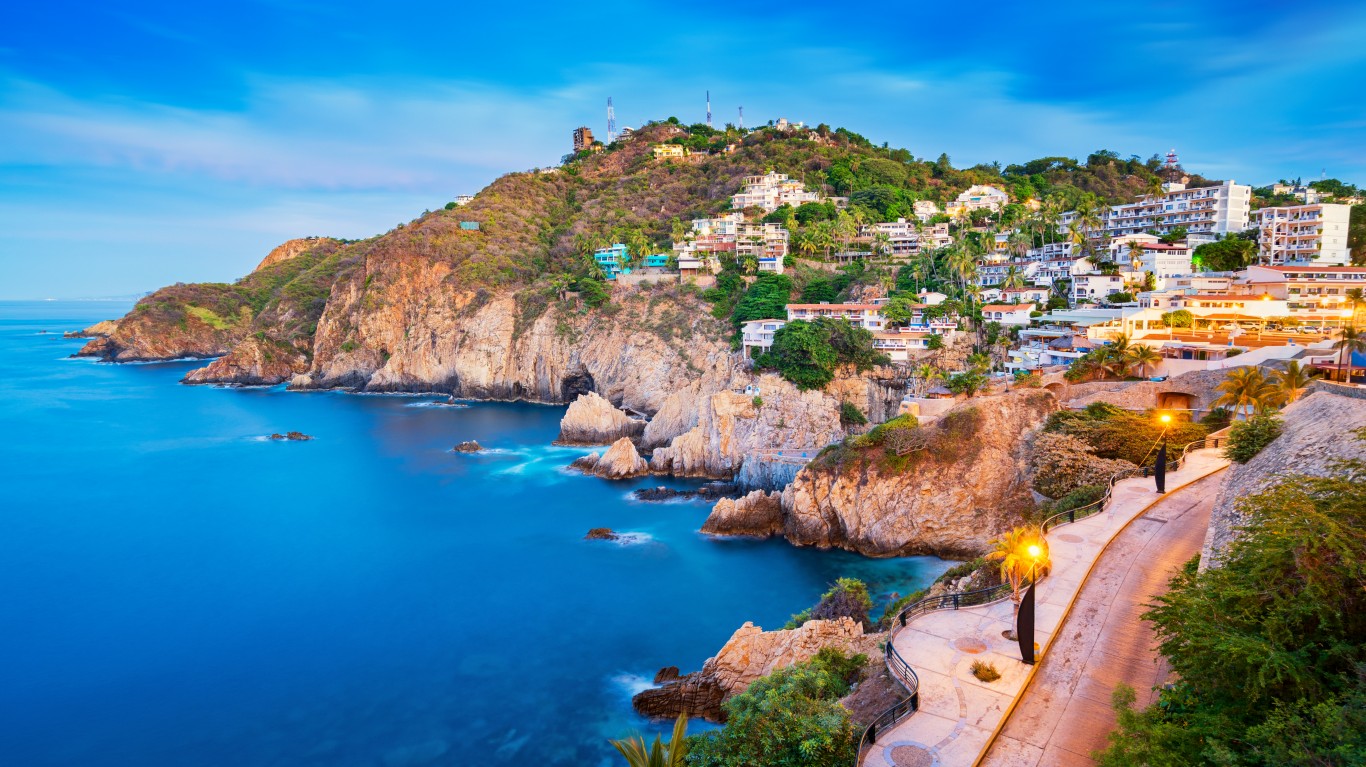
2. Acapulco, Mexico
> Homicides per 100,000 in 2018: 111
> Homicides in 2018: 948
> Population: 857,883
Tijuana may have been the murder capital of Mexico last year, but the touristic western port city of Acapulco has been the most or second most dangerous Mexican city every year since 2013, the first year of this report. Acapulco has racked up a significantly higher body count over the years than other Mexican cities on this list, with homicides rates of between 104 and 113 murders per 100,000 residents in each of the past six years.
[in-text-ad]
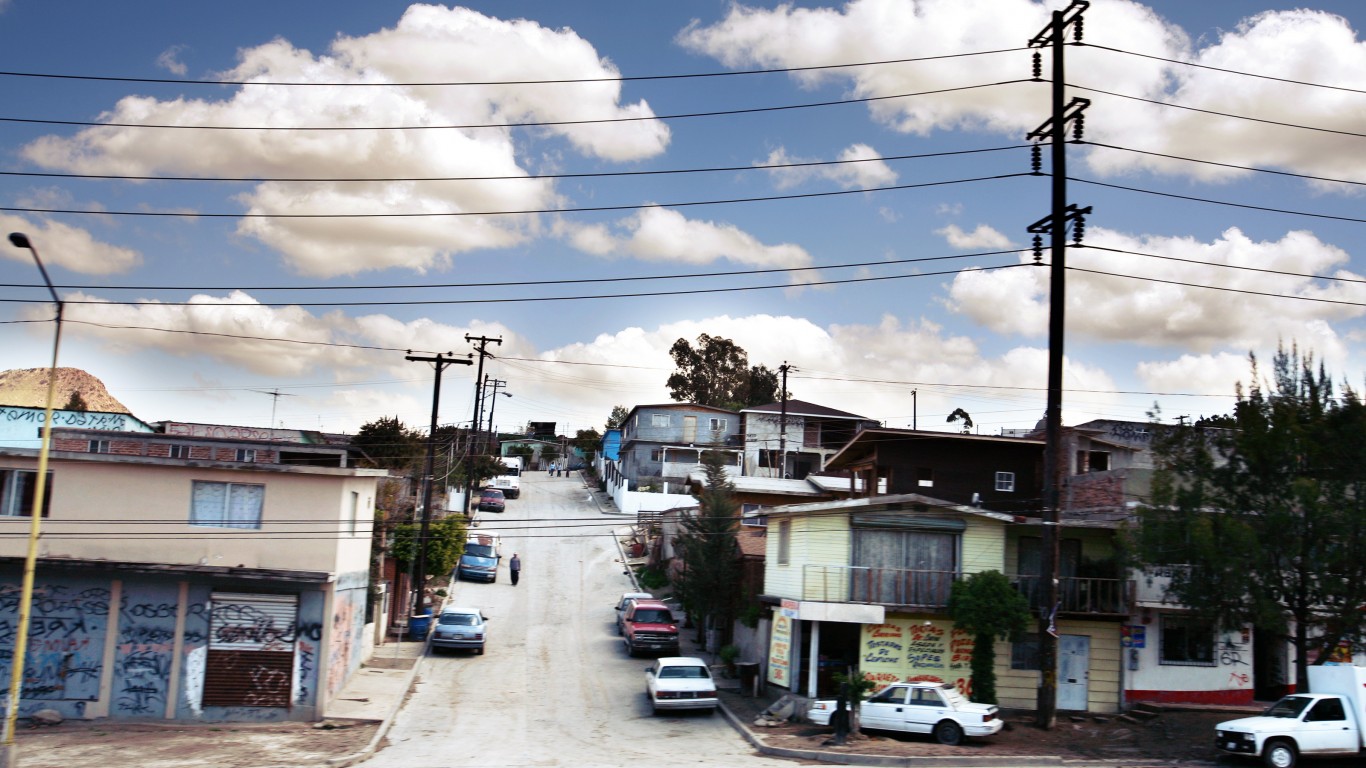
1. Tijuana, Mexico
> Homicides per 100,000 in 2018: 138
> Homicides in 2018: 2,640
> Population: 1,909,424
This Mexican border city 15 miles south of downtown San Diego has long been one of Mexico’s most violent cities. But even by murder-capital standards, Tijuana has an extremely high murder rate, with no signs of the killings abating. Already, 2019 kicked off with three murders on New Year’s Eve. The city’s homicide rate jumped from roughly 100 murders per 100,000 residents in 2017 to 138 per 100,000 in 2018.
Get Ready To Retire (Sponsored)
Start by taking a quick retirement quiz from SmartAsset that will match you with up to 3 financial advisors that serve your area and beyond in 5 minutes, or less.
Each advisor has been vetted by SmartAsset and is held to a fiduciary standard to act in your best interests.
Here’s how it works:
1. Answer SmartAsset advisor match quiz
2. Review your pre-screened matches at your leisure. Check out the advisors’ profiles.
3. Speak with advisors at no cost to you. Have an introductory call on the phone or introduction in person and choose whom to work with in the future
Get started right here.
Thank you for reading! Have some feedback for us?
Contact the 24/7 Wall St. editorial team.
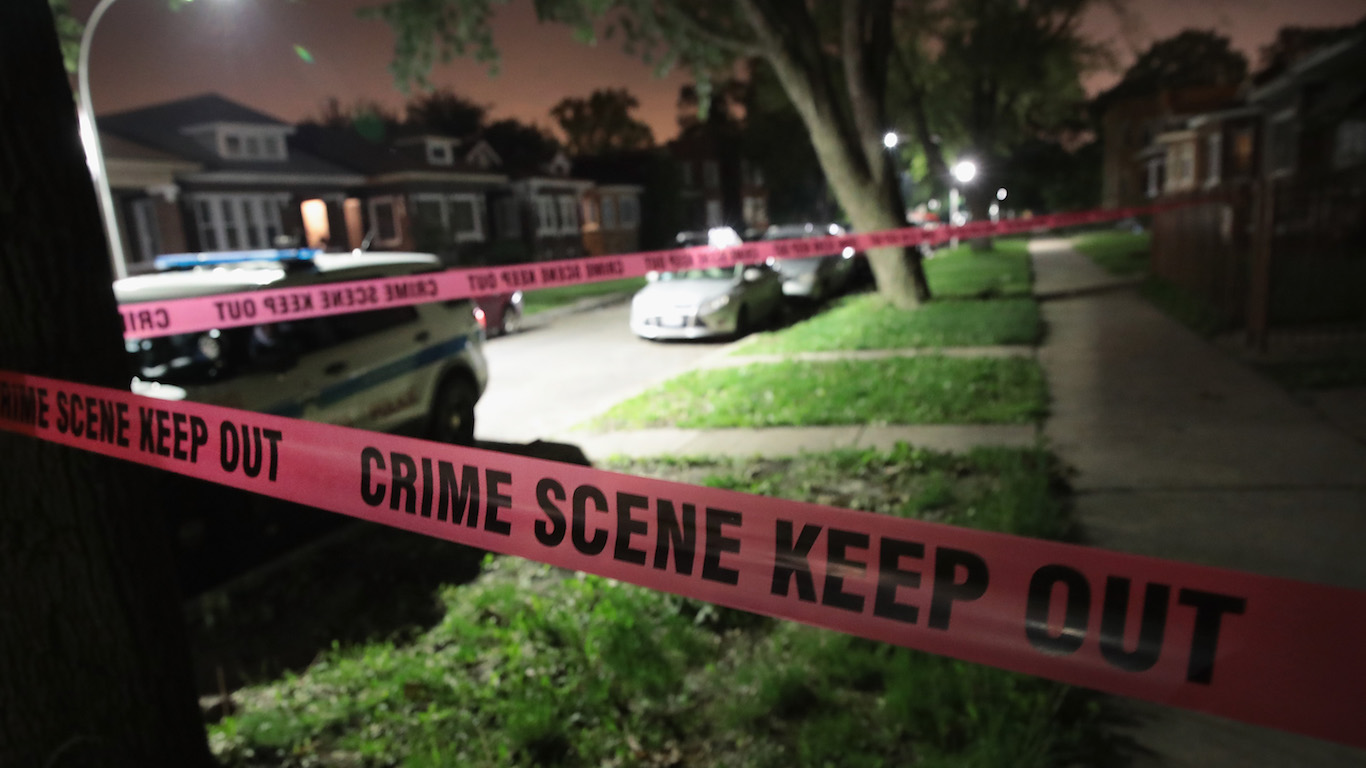 24/7 Wall St.
24/7 Wall St. 24/7 Wall St.
24/7 Wall St. 24/7 Wall St.
24/7 Wall St.

